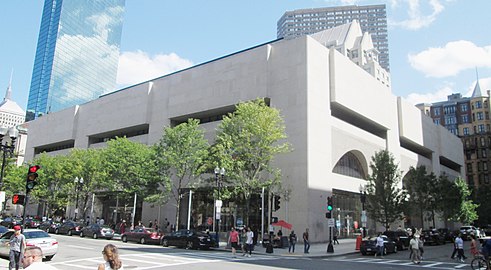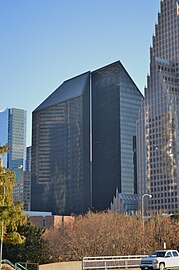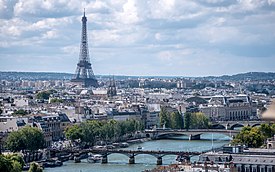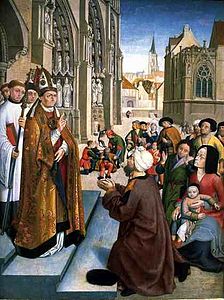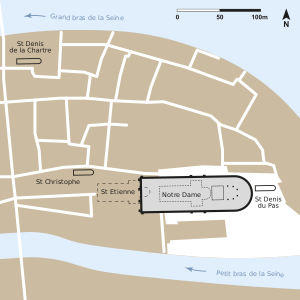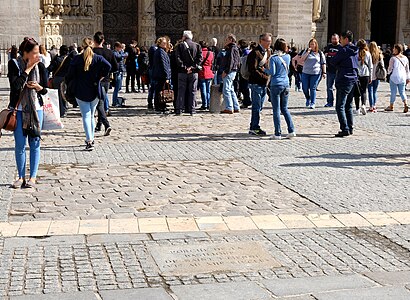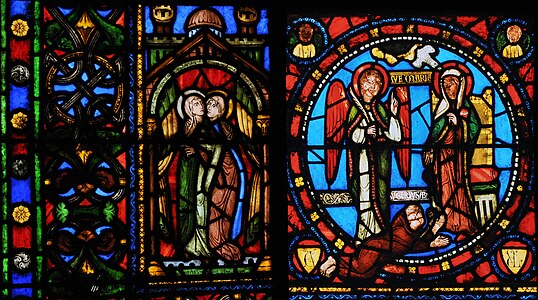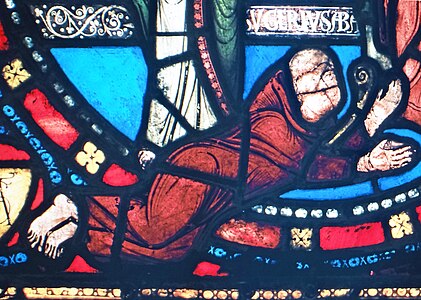User:SiefkinDR/sandbox
High Gothic[edit]
Top: Wells Cathedral in Wells (1176–1450); middle: Sainte-Chapelle in Paris (1194–1248); bottom: tympanum of Rouen Cathedral (15th century) | |
| Years active | Late 12th century–16th century |
|---|---|
| Location | Catholic Europe and West Asia |
| Influences | Romanesque architecture, Byzantine architecture, Islamic architecture, and possibly Armenian architecture |
| Influenced | Post-Gothic, Gothic Revival architecture, Baroque Gothic |
High Gothic was a period of Gothic architecture in the 13th century, from about 1200 and 1280, which saw the construction of a series of refined and richly-decorated cathedrals It appeared most prominently in France, largely thanks to support given by King Louis IX of France (1226-1270).[1] I High Gothic was a period or phase of Gothic architecture, rather than a specific style; During the High Gothic period, the Rayonnant style was predominant. Its goal was to bring the maximum possible light from the stained glass windows, and to awe the church goers with lavish decoration. Rayonnant It took its name from the radiating design of the immense rose windows which became a common feature of the High Gothic.
Innovations during the High Gothic period included the reduction of the levels of the nave interior from four to three by merging the Gothic triforium and clerestory. This allowed much larger stained glass windows, which filled the cathedrals with light. [2] The added interior light called for more ornate interior decoration, which was provided by adding designs in stone tracery.
The period also saw the use of realistic sculpture to decorate both the interior and the exterior, particularly over the church portals. This was influenced by ancient Roman sculpture, which had recently been discovered in Italy. [3]
Improvements in tracery led to the most characteristic feature introduced in the period, rose window, whose radiating designs gave the name to the Rayonnant style. The somber colors of the early stained glass windows slso became lighter, also bringing more light into the cathedral, .[4]
History[edit]
-
The nave of Reims Cathedral, facing the choir (1220)
-
Apse chapel of Amiens Cathedral (13th century)
Elements of High Gothic architecture first appeared in France, largely due to the the passionate support given to new churches and cathedrals by King Louis IX. Early examples were Rayonnant choir and clerestory of Amiens Cathedral begun after 1236, and in the the new transept and nave of the Abbey of Saint-Denis,
Perhaps the most influential of the High Gothic churches was Sainte-Chapelle, the royal chapel in Paris created for Louis IX. Several European monarchs attended its dedication, and its features were widely imitated, both in France and beyond. [5]
Examples[edit]
Features[edit]
The introduction of Bar tracery, creating designs within windows with curving stone bars, was another important innovation during the High Gothic period. The bare walls of the Early Gothic were also covered with tracery in elaborate designs, which complemented the decoration of the windows. ,[6]
The exteriors were given richer ornamentation, including pinnacles, or slender spires atop the buttresses.and ornate tracery around the windows. Other High Gothic elements introduced during the period pinnacles, slender spires atop the piers and buttresses, and very elaborate bar tracery in the windows and on the walls.[7]
History[edit]
The first churches and cathedrals with High Gothic features appeared in France early 13th century. They included Amiens Cathedral where the the choir triforium and clerestory were begun after 1236, and at the Basilica of Saint-Denis, where the transept and naves were begun sometime after 1231. The objective of the architects was to bring the maximum possible light into the church by by glazing the entire wall from the top of the arcade to he apex of the vault.[8]
The first High Gothic churches and cathedrals appeared in France in the 13th century. in about appeared in France between about 1250 to 1300. the first half of the 13th century. The dominant style during the High Gothic period is called Rayonnant
During the High Gothic period, the priority of architects turned from building larger and higher cathedrals, important style which emerged during the High Gothic Period was Rayonnant, [9]
The most important style which emerged during the High Gothic Period was Rayonnant, which extended the beginning of the Flamboyant Gothic and the Late Gothic period. Cite error: A <ref> tag is missing the closing </ref> (see the help page).
During the High Gothic period, the attention of architects turned from seeking cathedrals of greater size and height. to richer decoration. They introduced bar tracery, using slender curving ribs of carved stone to create elaborate designs and much larger stained glass windows, particularly to make a very large [[rose windows over the portal.
History[edit]
Prior to the High Gothic period,the priority of French architects was to build taller and taller churches. But after the diastrous collapse of the tallest structure, Beauvais Cathedral, in 16 cathedral, the priority shifted to increased light in the interiors and richness of decoration.[10]
The development of improved versions of the flying buttress permitted architects to build thinner walls with more space for windows. Beginning at Amiens Cathedral in 1236, the clerestory and triforium levels were merged together into a single level. This resulted in the installation of much larger stained glass windows, which filled the walls with glass. The rose window became the best-known feature of High Gothic; they became larger and larger, filling the space above the portal. The designers of the windows also began replacing the deeper coloured glass with lighter colours. further increasing the interior light.[11]
Examples[edit]
-
Tracery of rose window over west portal of Amiens Cathedral
-
Tracery on apse of Reims Cathedral
-
Detail of bar tracery from Reims Cathedral
The introduction of Bar tracery, creating designs within windows with curving stone bars, was another important innovation during the High Gothic period. The bare walls of the Early Gothic were also covered with tracery in elaborate designs, which complemented the decoration of the windows. ,[12]
Sculpture[edit]
-
Scupture of Apostles on the tympanum of Rouen Cathedral
-
apse of Reims Cathedral
-
THe Portal of Saint-Jeann, Rouen Cathedral
Sculpture was an integral element of the High Gothic period. It was particularly used to fill the niches over the portal at the west end with images of Saints. The realism of the faces and robes of statues compared with those of Early Gothic showed that the sculptors were familiar with ancient Roman sculpture.
Prior to the High Gothic period,the priority of French architects was to build taller and taller churches. But after the diastrous collapse of the tallest structure, Beauvais Cathedral, in 16 cathedral, the priority shifted to increased light in the interiors and richness of decoration.[13]
The increased light in the interior was accomplished by modifying walls above the arcades from three levels to two levels.. This made possible the installation of much larger windows. The deep colors of the stained glass windows were also lightened, to further increase lthe illumination.
Decoration was enhanced by the use of bar tracery; slender ribs of stone were applied to the walls and installed into the used to create In the Early Gothic style, the walls of cathedrals had four levels; arcades of massive pillars at the bottom, with a gallery, the triforium above, triforium, or midlevel passage above, triforium, a narrow page above, bottom, During the High Gothic, the walls weDuring the High Gothic period, Another important development was the change in the walls,
It was not a single stylwas preceded by Early Gothic and followed by Late Gothic. The later part of the period introduced the Rayonnant style. the []It occupied the first part of the It was not one specific style; many of the buildings it is the English-language term for a period of French Gothic architecture, which, between about 1200 and 1260, produced some of the most refined and elegant French cathedrals. Influential exaamples built during the High Gothic include Amiens Cathedral, the royal chapel of Sainte-Chapelle. Rouen Cathedral in France, and, outside France, Cologne Cathedral in Germany.[14]
Notable examples Gothic churches, including Amiens Cathedral, [[Saint Chapelle] , the royal chapel of r of Saint-Chapelle his period, between about 1200 and 1260, saw the construction of some of the between between about 1200 and 1260. This period produced some of the mostThe period includes the he period These buildings bout 1200 and 1260. which saw important innnovation in French Gothic architecture. The cathedrals built in France during the High Gothic period are largely in the style known in French and English as Rayonnant. [15]
Elements of High Gothic
Following the disastrous collapse of the vaults of the newest and tallest new cathedral, Beauvais Cathedral French architects turned their attention instead on the decorative elements, and to bringing more light into the interior. [16]
Name of Fontainebleau[edit]
The name of the chateau and the forest comes from the "Fontaine Bliaud", a small natural spring, located in the English garden not far from the large basin of the chateau.[17] An early folk-tale in the 17th century attributed the name to a favorite hunting dog of King Louis VII (?) who became separated from the royal hunting party, and whom the King finally discovered by the side of the fountain.
Rayonnant Gothic
Rayonnant Gothic, or simply Rayonnant, was a period of the construction of French cathedrals in the 13th century which is often described as the high point of French Gothic architecture. During this period, the architects turned away from the goal achieving greater height and turned their attention to decoration, particularly pinnacles, mouldings, and especially the tracery in windows. The style took its name from the ornamental design of the enormous rose windows. [18]
Features of Rayonnant included larger windows, thinner supporting columns and ribs, and the combination of the mid-level triforiumupper level clerestory which turned the upper walls into enormous screens of glass.
The result was the birth of what is known as the Rayonnant style (from the radiating character of the rose window, one of the style’s most prominent features). The earliest moves in this direction were at Amiens Cathedral, where the choir triforium and clerestory were begun after 1236, and at Saint-Denis, where transepts and nave were begun after 1231. Architects opened up as much of the wall surface as possible, producing areas of glazing that ran from the top of the main arcade to the apex of the vault. The combination of the triforium gallery and clerestory into one large glazed area had, of course, a unifying effect on the elevations. It produced an intricate play of tracery patterns and instantly unleashed an era of intense experiment into the form that these patterns should take. Many of the achievements of the Rayonnant architects are extremely fine—for instance, the two transept facades, begun during the 1250s, of Notre-Dame, Paris. The decorative effect of this architecture depends not only on the tracery of the windows but also on the spread of tracery patterns over areas of stonework and on architectural features such as gables.
(EB) The result was the birth of what is known as the Rayonnant style (from the radiating character of the rose window, one of the style’s most prominent features). The earliest moves in this direction were at Amiens Cathedral, where the choir triforium and clerestory were begun after 1236, and at Saint-Denis, where transepts and nave were begun after 1231. Architects opened up as much of the wall surface as possible, producing areas of glazing that ran from the top of the main arcade to the apex of the vault. The combination of the triforium gallery and clerestory into one large glazed area had, of course, a unifying effect on the elevations. It produced an intricate play of tracery patterns and instantly unleashed an era of intense experiment into the form that these patterns should take. Many of the achievements of the Rayonnant architects are extremely fine—for instance, the two transept facades, begun during the 1250s, of Notre-Dame, Paris. The decorative effect of this architecture depends not only on the tracery of the windows but also on the spread of tracery patterns over areas of stonework and on architectural features such as gables. During this period
of French cathedrals in the 13th century which is often considered the high point of French Gothic architecture. French building style (13th century) that represents the height of Gothic architecture. During this period architects became less interested in achieving great size than in decoration, which took such forms as pinnacles, moldings, and especially window tracery. The style’s name reflects the radiating character of the rose window. Other features include the thinning of vertical supporting members, the enlargement of windows, and the combination of the triforium gallery and clerestory into one large glazed area, until walls became largely undifferentiated screens of tracery, mullions, and glass. Amiens Cathedral (1220–70) is cited as its earliest manifestation. Especially fine achievements include Notre-Dame de Paris, the church of Saint-Urbain in Troyes (founded 1262), and the extraordinary Sainte-Chapelle, Paris (consecrated 1248), Louis IX’s palace chapel. See also cathedral.
Rayonnant Gothic or simply "Rayonnant", was a style of Gothic architecture which appeared in France in the 13th century. During this period, the search to build bigger and taller cathedrals was gradually replaced by an effort to bring in a maximum of light The use of bar tracery, separating sections of glass with thin stone mullions or bars instead of cutting the windows into stone, permitted the creation much larger stained glass windows, filling the walls. The sensation of verticality was reinforced by Slender vertical tracery running up the walls between the windows. The triforia, the windowless galleries between the arcades and the clerestory, or upper windows, were given windows and and merged with the clerestory above,creating walls composed entirely of glass and tracery. The shining light from the new windows gave the style its name, "Rayonnant". [19] t ook such forms as pinnacles, moldings, and especially window tracery. The style’s name reflects the radiating character of the rose window. Other features include the thinning of vertical supporting members, the enlargement of windows, and the combination of the triforium gallery and clerestory into one large glazed area, until walls became largely undifferentiated screens of tracery, mullions, and glass.
EB Quotations
Reims Cathedral Reims Cathedral, is a medieval Gothic cathedral in northern France built between 1221 and 1225. It features an exterior richly decorated with sculpture, and exceptionally large a stained glass windows. The windows were made possible by one of the first uses of bar tracery, dividing the pieces of glass with carved stone bars, instead of cutting openings in plates of stone. This made possible much larger windows, which flooded the interior with light. Reims has been described as "one of the artistic masterpieces of the French High Gothic Period."[20]
"Reims is richly decorated with elegant masonry sculpture (particularly the exterior) and exceptional stained-glass windows, making it one of the artistic masterpieces of the French High Gothic period." EB [21]
'High Gothic is the term used by American and British scholars to describe the emergence of a new, more refined style of of Gothic architecture between about 1225 and 1289. It includes some of the most famous French Gothic cathedrals: the rebuilt Chartres Cathedral, Reims Cathedral, Amiens Cathedral, Beauvais Cathedral and Bourges Cathedral[22]Cite error: A <ref> tag is missing the closing </ref> (see the help page).
Gothique Classique[edit]

Gothique Classique, or "Classical Gothic", describes the style of a group of major new cathedrals built in France in the late 12th and early 13th century, which represented a new stage in the development of French Gothic architecture. The most influential examples are Chartres Cathedral (1194); Bourges Cathedral (1195); Reims Cathedral (1211) and Amiens Cathedral (1220). Features of these cathedrals were gradually adapted in many later French cathedrals, and then in other parts of Europe.[23]
Gothique Classique was the second period of French Gothic architecture, preceded by "Premier Art Gothic" ("Early Gothic" in English) and succeeded by the more decorative Rayonnant at the end of the first half of the 13th century, and then the Flamboyant in the second half of the 14th century.[23] In English architectural histories Gothique Classique is usually included within High Gothic architecture, the period after Early Gothic and preceding Rayonnant. In French texts Rayonnant is considered a part of Gothique Classique.
Innovations[edit]
The main features of Gothique Classique, which set it apart from Early Gothic architecture, appeared in Chartres Cathedral. They included a very high, long nave flanked with two collateral aisles; a large transept, and a semi-circular passage or disambulatory in the apse behind the choir, ringed by a group of five small chapels.[23]
The vaults of the ceiling were also innovative; a step forward from the six-part vaults of Early Gothic. They were quadripartite, divided into four sections, in a rectangular shape, with the longer part, or barlong, perpendicular to the axis of the nave. The ribs the vaults ran downwards along the walls and and wrapped around the rows of columns and pillars in the nave.[24]
The horizontal tribunes, or passageways midway up the walls of earlier cathedrals, which provided additional support for the walls of early Gothic cathedrals, were eliminated. Instead, the walls were supported from the outside by the Flying buttresses which leaned against the outer walls. This permitted much higher arcades, higher walls and, especially, much larger windows to bring more light into the interior.[24]
Bar tracery[edit]
One important innovation was introduced in this period; the use of bar tracery to separate the pieces of glass in the windows. The earliest Gothique Classique cathedrals, including Chartres Cathedral, used plate tracery, by which the opening for the glass was cut into a stone slab or plate. This required relatively small panes of glass which admitted less light. The innovations of the 12th century, particularly the new vaults and the use flying buttresses, made possible thinner lateral walls and larger windows. Instead of being set into thick stone frames, the window panes could be separated by thin stone mouldings or bars. These new windows were much lighter and larger and allowed more openings and more intricate designs.[25] [26]
-
Bar Tracery windows at Amiens Cathedral
-
Bar tracery windows at Reims Cathedral
Three-level nterior elevations[edit]
The walls of High Gothic othique cathedrals the nave were usually divided into three levels, with the arcade on the ground floor, the triforium or passageway without windows above it, and the clerestory with large windows at the top. They had higher and thinner walls than Early Gothic churches, made possible largely by the support outside the walls provided by the flying buttresses. This in turn allowed larger windows in the upper level, or clerestory.
-
The three levels of the Chartres Cathedral interior
-
The three levels of the interior of Bourges Cathedral
-
Interior of Reims Cathedral
-
The tree levels and vaults of Amiens Cathedral
Flying Buttress[edit]
The flying buttress was used some early French Gothic Cathedrals prior to the Classical period. The flying buttresses of the apse of the church of the Abbey of Saint-Germain-des-Pres ere added at the end of the 12th century., However, Gothique Classique Classic architects But Gothic architects made them higher, stronger, and with a longer reach, to support the increasingly high upper walls.[27]
Bibliography[edit]
- Mignon, Olivier (2015). Architecture des Cathédrales Gothiques (in French). Éditions Ouest-France. ISBN 978-2-7373-6535-5.
- Renault, Christophe; Lazé, Christophe (2006). Les Styles de l'architecture et du mobilier (in French). Gisserot. ISBN 978-2-87747-465-8.
- Wenzler, Claude (2018). Les cathédrales gothiques: Un défi médiéval (in French). Éditions Ouest-France. ISBN 978-2-7373-7712-9.
Citations[edit]
- ^ "High Gothic", Encylopaedia Britannica on-line (by subscription) retrieved February 2024
- ^ "High Gothic", Encylopaedia Britannica on-line, retrieved February 2024 (by subscription)
- ^ "High Gothic sculpture", Encylopaedia Britannica on-line, retrieved February 2024 (by subscription)
- ^ "High Gothic", Encylopaedia Britannica on-line (by subscription), (retrieved February 2024)
- ^ "High Gothic", Encylopaedia Britannica on-line (by subscription), (retrieved February 2024)
- ^ "High Gothic", Encylopaedia Britannica on-line (by subscription), (retrieved February 2024)
- ^ "High Gothic", Encylopaedia Britannica on-line (by subscription), (retrieved February 2024)
- ^ "High Gothic", Encylopaedia Britannica on-line (by subscription), (retrieved February 2024)
- ^ "High Gothic", Encylopaedia Britannica on-line (by subscription), (retrieved February 2024)</refI>t followed Early Gothic and ex extended from Encylopaedia Britannica on-line (by subscription), (retrieved February 2024)
- ^ "High Gothic", Encylopaedia Britannica on-line (by subscription), (retrieved February 2024)
- ^ "High Gothic", Encylopaedia Britannica on-line (by subscription), (retrieved February 2024)
- ^ "High Gothic", Encylopaedia Britannica on-line (by subscription), (retrieved February 2024)
- ^ "High Gothic", Encylopaedia Britannica on-line (by subscription), (retrieved February 2024)
- ^ "High Gothic", Encylopaedia Britannica on-line (by subscription), (retrieved February 2024)
- ^ Enyclopaedia Britannica, "High Gothic", retrieved February 2024
- ^ Enyclopaedia Britannica, "High Gotic", retrieved February 2024
- ^ Hebert, Jean-François and Sarmant, Thierry, "Fontainebleau - Mille ans d'histoire de France", Éditions Tallandier (2020), pg. 19
- ^ "Encylopaedia Britannica", "Rayonnant", retrieved 17 May 2023
- ^ Encyclopaedia Britannica on line, "Rayonnant"
- ^ Encylopaedia Britannica on-line, retrieved 14 May, 2023.
- ^ Encylopaedia Britannica on-line, retrieved 14 May, 2023.
- ^ Watkin 1986, p. 132.
- ^ a b c Renault & Lazé 2006, p. 36.
- ^ a b Wenzler 2018, p. 33.
- ^ Honour, H. and J. Fleming, (2009) A World History of Art. 7th edn. London: Laurence King Publishing, p. 948. ISBN 9781856695848
- ^ Hamlin, Alfred (1906). A text-book of the history of architecture (7 ed ed.). New York, Longmans. pp. 188.
- ^ Dumoulin (2007), p 114
Citations[edit]
Bibliography[edit]
Hamilton E. James[edit]
James played an important role in taking Blackstone public, transforming it from a private equity company into one of the world's largest alternate investment firms.[1] He helped develop Blackstone’s Tactical Opportunities and other businesses, designed for investments that don’t precisely fit into traditional categories.[1]
[2] He helped develop Blackstone’s Tactical Opportunities and other businesses, designed for investments that don’t precisely into a private-equity of credit category.[1]
Brief History of Church of Les Billettes[edit]
The first church was built in 1294. In 1299, King Philippe IV of France invited the order of the Charity of Notre Dame, also known as the Billettes, to assure services in the new church. As the church continued to attract large numbers of pilgrims, THe church was rebuilt in 1427. , and a cemetery and cloister were added in 1427. church was built in 1405, then cemetery and a cloister was added in 1427.
In 1633, the abbey was taken over by a new order, the Carmelites of the Observance of rennes. also known as the Carmes-Billettes. In 1742 the Carmes-Billettes began construction of a new church, as their number of monks had grown from fourteen in the 17th century to fifty in the 18th century. They chose the architect Jacques Hardouin-Mansart de Sagonne (1711-1778) grandson of Jules Hardouin-Mansart, who had founded the famed Mansard dynasty of architects. At that time he was building the new church of Saint Louis for King Louis XV the Palace of Versailles, and then the Church of La Madeleine in Paris. He designed a larger church for Les Billettes which increased the number of worshippers from 960 to 1200.
Comstruction of the new church lasted from 1754 until 1758. During the French Revolution, the church was closed and sold. IN 1808, the Emperor Napoleon auhtorized the the city of Paris to buy the church, which was then transferred to the Consistory of the Lutheran Church.. THe decoration of the interior largely took place dsuring the Empire of Napoleon I and the reign of King Louis Philippe. The first church was built in 1294. In 1299, King Philippe IV of France invited the order of the Charity of Notre Dame, also known as the Billettes, to assure services in the new church. As the church continued to attract large numbers of pilgrims, THe church was rebuilt in 1427. , and a cemetery and cloister were added in 1427. church was built in 1405, then cemetery and a cloister was added in 1427.
In 1633, the abbey was taken over by a new order, the Carmelites of the Observance of rennes. also known as the Carmes-Billettes. In 1742 the Carmes-Billettes began construction of a new church, as their number of monks had grown from forteen in the 17th century to fifty in the fifty in the middle of the 18th century. They chose the architect Jacques Hardouin-Mansart de Sagonne (1711-1778) grandson of Jules Hardouin-Mansartthe founder the famed Mansard dynasty of architects. At that time he was building the new church of Saint Louis for King Louis XV the Palace of Versailles, and then the Church of La Madeleine in Paris. He designed a larger church for Les Billettes which increased the number of worshippers from 960 to 1200.
Comstruction of the new church lasted from 1754 until 1758. During the French Revolution, the church was closed and sold. IN 1808, the Emperor Napoleon auhtorized the the city of Paris to buy the church, which was then transferred to the Consistory of the Lutheran Church.. THe decoration of the interior largely took place dsuring the Empire of Napoleon I and the reign of King Louis Philippe.
THe altar was a late addition. The altar was added in À la Révolution, Sources :
| Val-de-Grâce (church) | |
|---|---|
Église Notre-Dame du Val-de-Grâce | |
 The west front of the church | |
| Country | France |
| Denomination | Roman Catholic |
| Website | www |
| History | |
| Founded | 1626 |
| Consecrated | 1657 |
| Architecture | |
| Heritage designation | Monument historique |
| Style | Neoclassical architecture |
| Groundbreaking | 1626 |
| Completed | 1857 |
| Administration | |
| Archdiocese | Paris |
Colour and Controversy[edit]
The bright colour of the cleaned interior will come as a shock to many visitors, accustomed to the grimy gray of the pre-fire cathedral. "The whiteness under the dirt was quite spectacular", according to Jean-Michel Guilemont of the French Ministry of Culture. The stone was sprayed with a latex solution to lift the centuries of grime and soot. However, the cleaning of the church interior with latex solutions was critisized by Michael Daley of Artwatch UK, referring to to cleaning of Saint Paul's Cathedral in London. "Is there any good basis of wishing to present an artificially brightened and ahistorical white interior?" Guilement responded, "The interior elevations will regain their original colour, since the chapels and side aisles were very dirty. Of course it is not a white colour. The stone has a blonde colour, and the architects are very attentive to obtaining a patina which respects the centuries." [3]
Historic churches of Paris[edit]
This is a list and brief description of Paris churches classified by the French Government as national historic monuments.
Romanesque and Gothic[edit]
| Name | Image | Arrondissement | Type | Summary |
|---|---|---|---|---|
| Saint-Germain-des-Prés (abbey) |  |
Saint-Germain-des-Prés (6th) | Romanesque/,Gothic (consecrated 1133} | Originally the church of a Benedictine abbey founded in the 6th century, by Childebert. I, the son of Clovis, King of the Franks. The first church was destroyed by the Vikings and rebuilt. The present church was consecrated in 1163, and is considered the oldest church in Paris. The flying buttresses, from the 12th century, were the first on a Paris church.[4] It was named for Saint Germain, an early Bishop of The city. |
| Notre-Dame de Paris |  |
Ile de la Cité (6th) | High Gothic cathedral,( begun 1163} | Construction of the cathedral began in 1163 under Bishop Maurice de Sully and was largely completed by 1260, though it was modified frequently in the centuries that followed. In the 1790s, during the French Revolution, Notre-Dame suffered extensive desecration; much of its religious imagery was damaged or destroyed. In the 19th century, the church was extensively restored. It was badly damaged by fire in in 2019, and is being restored. |
| Sainte-Chapelle |  |
Ile de la Cité (6th) | Gothic royal chapel (1238-1248) | The royal chapel built by Louis IX to contain his collection of Passion relics, including Christ's Crown of Thorns – one of the most important relics in medieval Christendom. It is noted especially for its towering walls of stained glass. |
| Saint-Eustache |  |
1 Rue de Jour (1st arrondissement) | Flamboyant Gothic Parish church (1532-1640) | Located next to Les Halles markets, rebuilt on a vast scale between 1532 and 1640 in the Flamboyant Gothic style, with touches of the Italian Renaissance.[5] |
| Saint-Germain l'Auxerrois |  |
Place du Louvre (1st arrondissement) | Parish church (13th-15th century | Located next to the Louvre, this was the parish church of the Kings of France and their court. First constructed by Robert II the Pious in the 12th century, it was rebuilt on a larger scale in the 13th century, then enlarged again in the 15th and 17th centuries. Along with Sainte-Chapelle, it the only Paris church that still has its original Gothic porch.[6] |
| Saint-Séverin |  |
Rue des Pretres-Saint-Severin,(5th) | Flamboyant Gothic Parish Church (1653-1740) | In the heart of the Latin Quarter, The church was first built in 1230, then, after a fire, rebuilt and enlarged in 15th to 17th century in the Flamboyant Gothic style. It was the parish church for students at the University of Paris. and is one of the oldest churches Left Bank.[7] |
| Saint-Nicolas-des-Champs |  |
254 Rue Saint Martin (3rd) | Flamboyant Gothic and Renaissance (1420 to 1615) | A Flamboyant bell tower (15th c.) is joined with a Renaissance portal (16th c.). Notable interior features include a forest of one hundred classical columns and a marble retable (1629), rare in Paris, filled with Renaissance paintings. The chapels are also filled with paintings of the period.[8] |
| Église Saint-Merri |  |
78 Rue Saint Martin (4th) | Flamboyant Gothic and Baroque (1510-1522) | The earliest church was built in 1200, while the present church dates from 1510 to 1522. The immense interior features lavish decor and notable paintings by Simon Vouet and Noël Coypel Their highly theatrical paintings enhance the baroque decor in the transept and chapels. [9] |
| Saint-Pierre de Montmartre |  |
2 Rue de Mont Cenis (18th arrondissement) | Gothic Abbey chapel, (1492-1626) | Close to the traditional site of the martyrdom of Saint Denis a chapel was probably founded here in the 11th century. In 1133 King Louis Louis VI purchased the site and founded a royal Benedictine convent. The chapel was reserved for eh tombs of the Abbesses of the Convent. The Abbey was destroyed during the French Revolution, and but a few vestiges of the original chapel remain, including a vault from 1147 and Merovingian capital column in the apse.[10] |
Baroque and Renaissance (Late 15th-early 17th century)[edit]
| Name | Image | Arrondissement | Type | Summary |
|---|---|---|---|---|
| Saint-Étienne-du-Mont |  |
Place Saint-Genevieve,(5th arrondissement) | Renaissance style, (1492-1626) | The church, in the student area of the Left Bank, originally was next to the Basilica where the King Clovis I and Saint Genevieve were buried. The present church was built between 1492 and 1626. The Pyramid-shaped facade dates to 1610. The architecture of the interior is Flamboyant Gothic, while the decoration added to it is in the French Renaissance style. It still has its original Rood screen an ornamental bridge separating the Choir from the Nave, built in about 1530.[11] |
| Eglise Saint-Paul-Saint-Louis |  |
90 Rue Saint Antoine, (5th arrondissement) | Baroque (1627-1641)) | The church was built between 1627 and 1641, and was the first church of the Jesuit order built in Paris. King Louis XIII laid the fist stone. The exterior adapted from the Church of the Gesù in Rome, while the interior shows the influence of the Flemish Baroque style. It displays a collection of paintings by French Baroque artists from the workshop of Simon Vouet, and works by Germain Pilon and Eugene Delacroix. Music was an important part of the Jesuit church service; The directors of music of the church included the composers Marc-Antoine Charpentier and Jean-Philippe Rameau. [12] |
| Saint-Roch, Paris |  |
Rue St. Honoré, (1st arrondissement) | Baroque and Classical style parish church (1653-1740) | The church was begun by Louis XIV in 1653, but was not finished until 1740. The architecture was directly inspired by the new style of the Church of the Gesù in Rome. The interior offers a succession of three very lavish chapels in succession after the choir, highly decorated with paintings and sculpture. In 1795 Napoleon Bonaparte ordered his soldiers to fire on counter-revolutionary soldiers gathered on the ststeps, launching his military and political career. |
| Saint-Louis-en-l'Île |  |
19 Rue Saint-Louis en l'Île, (4th arrondissement) | French Baroque,(1624-1726) | The exterior is rather plain, with an 18th century bell tower, but the interior displays the lavish French Baroque style of the 17th century. The arcades have rounded arches and pilasters with trompe-l'oeil channelling, joined with columns with Corinthian capitals, carved of travertine stone, and decorated with sculpted foliage and angels.[13] |
| Sainte Marguerrite |  |
19 Rue Saint-Louis en l'Île, (4th arrondissement) | French Baroque,(1624-1726) | The exterior is classical and rather plain, with an 18th century bell tower, but the interior displays the lavish French Baroque style of the 17th century. The arcades have rounded arches and pilasters with trompe-l'oeil channelling, joined with columns with Corinthian capitals, carved of travertine stone, and decorated with sculpted foliage and angels. Its most interesting feature is the Chapel of the Souls in Purgatory, painted in trompe l'oeil in the 18th century. |
Classicism and Neo-classicism (18th century)[edit]
| Name | Image | Arrondissement | Type | Summary |
|---|---|---|---|---|
| Saint-Gervais-Saint-Protais |  |
Place Saint Gervais (4th arrondissement) | Gothic nave, Classical facade (1494-1657 | The present church, one of the first major churches on the right bank of the Seine, It the successor to by a 6th century church, and a second church built on higher ground to avoid the floods of the Seine. The present church, slowly built between 1494 and 1657 due to the Wars of Religion, was finally finished in 1657. The facade, the portion completed last by Salomon de Brosse, became the first example of the French classical style in Paris. The interior is largely Renaissance [14] |
| Church of Les Billettes, Paris |  |
22 19 Rue des Archives [4th arrondissement of Paris) | Neoclassical architecture,(1299 (cloister), 1758 (church) | The medieval cloister (1299) from an earlier monastery is the oldest in Paris. The present church was built in 1758, and became a Lutheran church in 1808. [15] |
19th- 20th century[edit]
| Name | Image | Arrondissement | Type | Summary |
|---|---|---|---|---|
| Saint-Vincent-de-Paul, Paris |  |
Place Franz-Lizst, 10th arrondissement | Neo-classical (1824-44) | Located on the site where Saint Vincent de Paul l(1581-1660) carried out his mission of helping the poor. From 1831 onward, the architect was Jacques Hittorff, whose most famous later work was the Gare du Nord railway station. The interior features a frieze by Hippolyte Flandrin, called "The Mission of the Church, the length of the building on both sides, with one hundred thirty-five figures. The main altar is covered by a large baldequin or canopy, in the form of a triumphal arch. Looking down on the altar is a monumental bronze statue of the crucifixion, made by François Rude[16] |
| Basilica of Sacré-Coeur de Montmartre |  |
Butte of Montmartre, 18th arrondissement | Neo-Byzantine basilica (1875-1914) | The church, dedicated to the Sacred Heart of Christ, is located at the highest point in Paris, and overlooks the city. It was first proposed in 1870 as penitence for the "Misfortunes of France", particularly the defeat of France in the Franco-German War of 1870.[17]. The vast golden and ceramic Neo-Byzantine mural in the dome, covering 475 square meters, illustrates the the Celestial Kingdom of Christ.[18] |
Other churches[edit]
| Name | Image | Arrondissement | Type | Summary> |
|---|
Bibliography[edit]
- Dumoulin, Aline (2010). Églises de Paris. Éditions Massin. ISBN 978-2-7072-0683-1.
- Fierro, Alfred (1996). Histoire et dictionnaire de Paris. Robert Laffont. ISBN 2-221-07862-4.
- Hillairet, Jacques; Connaissance du Vieux Paris; (2017); Éditions Payot-Rivages, Paris; (in French). ISBN 978-2-2289-1911-1
Notes and citations[edit]
- ^ a b c Gottfried, Miriam (2 December 2021). "Blackstone's Tony James, the Firm's Executive Vice Chairman, to Retire". www.wsj.com.
- ^ "Tony James to retire as Blackstone executive vice chairman". www.reuters.com. 2 December 2021.
- ^ "The Art Newspaper", 22 November 2022
- ^ Dumoulin (2007), p 114
- ^ Dumoulin (2007), p 18-22
- ^ Dumoulin (2007), p 24-27
- ^ "Church tour in English", Paroisse Saint-Séverin. Retrieved 24 July 2012.
- ^ Dumoulin (2007), p 50-55
- ^ Hillairet (2017). pg. 87
- ^ Dumoulin (2007), p 180-183
- ^ Dumoulin (2007), p 86-91
- ^ Dumoulin (2007), p 82-851
- ^ Dumoulin (2007), p 86-91
- ^ Dumoulin (2007), p 60-63
- ^ Dumoulin (2007), p 58-59-
- ^ Dumoulin, "Églises de Paris" (2010), pp. 158-161
- ^ "Le Sacre-Coeur - Monument Historique? Polemique en Vue." by Baudouin Eschapasse, "Le Point" magazine, October 14, 2020
- ^ Dumoulin, "Églises de Paris" (2010), pp. 184-187
Chartres Cathedral Organ
The buffet, or case of the grand organ of the cathedral is among the oldest I'm France. It was bvuiolt in the 14th century, rebuilt in 1475, and enlarged in 1542. It was classified as a historic monument.
The organ, since it was constructed, has been placed in the nave at the crossing of the south transept, sixteen meters above the floor of the nave, in close proximity to the choir, to assure the best sound quality throughout the cathedral. The whole case is fifteen meters high, with the top of its central tower thirty meters above the floor of the nave. The case was rebuilt during the Renaissance, and largely took its preesent form. Closer study of the case by the Ministry of Culture showed that the early holding holding was earlier was covered with polychrome painting; yellow ochre under a varnish of reddish brown in earlier layer, and then a brighter yellow on white. This study also showed that the mechanism was in very poor condition, and urgently needed reconstruction.
A major rebuilding and enlargement of the organ took place in 1969-71, both to restore the ageing instrument with new keys and mechanisms, to exxpand the number of keys and available effects, and modernise the capabilities of the organ. For example, the instrument now has a digital memory, so the organist can prepare the work in silence to perfect the final version.
The current instrument has 40-50 jeux or effects, and a total of 3500 to 4000 tuyaux, or pipes.
L’orgue, instrument de musique
Tout au long de son histoire, l’orgue a fait l’objet de rénovations, reconstructions, agrandissements, notamment dans sa partie sonore et ses organes de transmission. Ces interventions, plus ou moins heureuses selon les époques et les moyens financiers, se sont faites tous les 30 à 40 ans en moyenne.
La dernière grande intervention remonte aux années 1969/1971. Il s’agissait alors de faire un instrument « néo-classique » et de gonfler l’instrument avec un maximum de tuyaux et de jeux. Or, si l’instrument est tout en hauteur, il n’a que très peu de profondeur. Ses organes sont depuis quelques années en fin de vie et le grand orgue est « sous perfusion », l’ensemble des matériels étant aujourd’hui obsolètes.
C’est pourquoi l’Association des grandes orgues de Chartres milite depuis de nombreuses années pour sa reconstruction. Il s’agit d’une part de restaurer le buffet et de doter la cathédrale d’un orgue remarquable, et d’autre part d’assurer sa pérennité.
Cette reconstruction s’appuiera sur la grande tradition de facture d’orgues française, tant sur le plan sonore que sur le plan mécanique. Mais surtout il s’agit de prendre en compte les contraintes du buffet, de disposer les tuyaux dans peu de profondeur et de faciliter l’entretien de l’instrument par un accès simplifié. Au-delà de la qualité des matériaux (tuyaux d’étain et de plomb), de matériaux nobles pour les éléments mécaniques, il s’agit aussi de doter l’instrument des multiples possibilités offertes par les nouvelles technologies.
Ce grand orgue comptera 45 à 50 jeux, soit environ 3500 à 4000 tuyaux, et sera équipé d’une mémoire informatique permettant à l’organiste de préparer en toute quiétude les œuvres interprétées.
Le rayonnement de Chartres
Un des enjeux de cette réalisation est de contribuer au rayonnement de la cathédrale, dont le concours international d’orgue et le festival d’orgue sont des éléments majeurs. Il s’agit aussi de mettre l’orgue au niveau des plus grandes réalisations internationales en ce domaine.
Avec une transmission mécanique, capable de reproduire le subtil toucher des interprètes, une palette sonore s’identifiant à l’acoustique de la cathédrale et illustrant la grande tradition française, et des possibilités nouvelles en matière numérique, les interprètes et les improvisateurs disposeront d’un instrument de musique qui suscitera leur imagination.
Un effort sans précédent de l’État
Cette réalisation vient couronner la restauration du chœur et de la nef, et prochainement des transepts, en redonnant au grand orgue de Chartres sa magnificence et son éclat.
L’Association des grandes orgues de Chartres a milité depuis plus de 20 ans pour aboutir enfin à ce projet qui a été retenu comme prioritaire par le ministère de la Culture et a fait l’objet d’une dotation spéciale. Ainsi, la restauration du buffet sera prise en charge à 100% par l’État. Quant à la reconstruction de la partie instrumentale (l’orgue lui-même), elle est estimée à plus de 1,6 millions d’euros et fait l’objet d’une dotation spéciale de 75 % par l’État (ce qui est unique).
Article original publié dans la Lettre de Chartres Sanctuaire du Monde (mars 2019)
Commune prisoners[edit]
Once the Verailles army entered Paris, they were overwhelmed by the large numbers of Commune prisoners they took. Different commanders had different practices. In many units, Commune prisoners who were captured holding weapons, or with their hands darkened by gunpowder, were shot immediately. Commune soldiers who were foreigners, or who had deserted from the army, were also likely to be shot immediately.[1]
Once the Versailles army entered the city, it hastily organised a system of about twenty military tribunals in the different neighbourhoods, at the headquarters of each army corps or division. Tribunals met at the Ecole Militaire, Parc Monceau, [the Luxembourg Palac, [Place Vendome]]. the Gare du Nord, the city halls of the First and Fifth Arrondissement, the Pantheon, the Ecole des Arts et Metiers, and other locations, [2] After their trials.
Following their trials, those who were sentenced to death were taken immediately to nearby execution sites; these included the construction site for the Gare du Nord, the esplanade in the Tuileries Gardens the Luxembourg Gardens, Place du Chatelet, the Mazas Prison and later, the Père Lachaise Cemetery.[3]
Green pigments[edit]
Green pigments are the materials, originally powdered minerals, particularly coppery, used to create the green colors seen in painting and the other arts. Green pigments reflect the green portions of the spectrum of visible light, and absorb the others. Important green pigments in art history include Malachite and Verdigris, found in tomb paintings in Ancient Egypt, and the Green earth pigments popular in the Middle Ages.[4] More recent greens, such as Cobalt Green, are largely synthetic, made in laboratories and factories,
Malachite[edit]
Large deposits of malachite were mined by the Egyptians in the eastern desert and the west of Sinai. [5][6] Cleopatra is recorded to have used malachite to color her eyelids. It was mixed with egg or with the sap of the acacia plant, and used to paint papyrus manuscripts and the walls of tombs.[7]
It wss also widely used in China from antiquity, first in painting landscapes, and then, from the 5th century BC until the 3rd century AD, to make green inks, when the official palette of colors, under the influence of Confucianism, was reduced to blues made with azurite, and greens made with malachite.[8]
Artists in India imported malachite from Turkestan for murals, and monks in Tibet ground it coarsely to preserve the intensity of the color in manuscripts. In Europe, and particularly in Ireland, it was widely used for intense greens in illumination and miniature painting. They avoided mixing it with other colors, because in a mixture it became unstable.[9]
It was (and is) extremely expensive (more than 100 Euros for 100 grams in 200), so it was usually only used on limited surfaces. It was largely replaced in the early 19th century by chrome green, though it is still frequently used in China for fine greens.
In Latin America, the Teotihuacan civilisation, which ruled in Mexico between 300 and 650, AD, made murals using crushed malachite, which was mixed with chalk for lighter shades, or mixed with blue from azurite or lapis-lazuli to make blue greens, or with yellow ochre to make yellow-greens.[10]
Classical painters made extensive use of the color. The wedding gown in the "Marriage of the Arnolfini" by Van Eyck (1434) was painted with malachite.[11]
-
Illustration of the Buddha from the Ming Dynasty, surrounded by malachite green.
Viridian[edit]
Viridian is a blue-green synthetic pigment of medium saturation and relatively dark in value. It is a synthetic chromium oxide pigment that was created in the 19th century. It takes its name from "Viridis", the Latin word for green.[12]It became a particular favourite of the painters Paul Cezanne, Jean Renoir and Claude Monet.
[Chromium(III) oxide]] (or chromia) is one of the principal oxides of the mineral chromium. Chromium, among its more common uses, is a principal ingredient of stainless steel, which the steel its shining effect. In nature, the color is found in the rare mineral eskolaite. [13]
[
-
Chomium(III)-oxide sample
Green earth (Terre Verte)[edit]
Green earth was an olive-green natural pigment widely used in the 14th and 15th centuries. It was often used in Italian painting as an under layer beneath flesh colors, particularly in painting by Duccio. In some of Ducco's paintings th upper flesh colors deteriorated, and the green under layer has become visible.
Emerald Green[edit]
Emerald Green is an artificial pigment made by a reaction of sodium arsenite with copper(II)-acetate. While it makes a beautiful rich green, it is also extremely poisonous, as a result of its main ingredient, arsenic.
Verdigris[edit]
Verdigris or Vert-de-Gris, is a blue-green, copper-based pigment. Its name comes from the natural pigments that form a patina on copper, bronze, and brass as it ages.[14] The most famous example is the green patina that formed on the Statue of Liberty in New York Harbor. In the Middle Ages the patina was made by attaching copper strips to a wooden block with acetic acid, then burying the sealed block in dung. It would be dug up a few weeks later, the the verdigris scraped off. Another method was to put copper plates in clay pots filled with distilled wine. The verdigris which formed was scraped off each week. [15]
In the 19th century and earlier the pigment was also made by hanging copper plates over hot vinegar in a sealed pot until a green crust formed on the copper.[16] Today it is usually made by treating Copper(II) hydroxide]] with acetic acid.[17]
The pigment was used by the Romans, particularly in the murals at Pompei.[18] The pigment had its weaknesses; it sometimes suffered from humidity and heat, and when mixed with other colors, sometimes altered them. Verdigris was particularly unstable in when used to color an oil paint. It was sometimes mixed with lead white, giving it better opacity. Leonardo DaVinci, in his "Treatise on Painting", advised artists to avoid it. Nonetheless, it was widely used in miniature painting, in Safavid art and the art of Mongolia. In the late 19th century, it was almost entirely replaced by the synthetic Chrome green.[19]
Paolo Veronese used verdigris with lead white and some yellow. in "The Adoration of the Magi" at the National Gallery in London. The color has largely retained his particular brilliance.[20]
-
Verdigris patina on the Statue of Liberty
-
Verdigris pigment
-
"Nativity Mistica" by Botticelli (1500). The verdigris green glaze of the angels costumes, painted over gold leaf, have degraded and darkened with time.
-
Paolo Veronese, Adoration of the Magi" . Verdigris with lead white, (1573)
-
"The Tempest" by Giorgione (1508) Venetian painters made extensive use of Verdigris
Cobalt Green[edit]
- Cobalt green is a term used for two different types pigments, Both are obtained by doping cobalt(II) oxide into colorless host oxides. These synthetic pigments were first created by the Swedish chemist Sven Rinman in 1780.[21] It is also sometimes known as cinnabar green, turquoise green, Rinman's green, Rinmann's green, and zinc green.[22]
Chromium(III) Oxide[edit]
Composition of non-organic green pigments[edit]
(See List of inorganic pigments)
- Cadmium green: a light green pigment consisting of a mixture of cadmium yellow (CdS) and chrome green (Cr2O3).
- Green earth: also known as terre verte and Verona green (K[(Al,Fe3+),(Fe2+,Mg](AlSi3,Si4)O10(OH)2).
- Chrome green (PG17): anhydrous chromium(III) oxide (Cr2O3).
- Viridian (PG18): hydrated chromium(III) oxide Cr2O3 • xH2O.
- Cobalt green: also known as Rinman's green or zinc green (CoZnO2).
- Malachite: cupric carbonate hydroxide (Cu2CO3(OH)2).
- Scheele's Green (also called Schloss green): cupric arsenite (CuHAsO3).
- Green earth: also known as terre verte and Verona green (K[(Al,Fe3+),(Fe2+,Mg](AlSi3,Si4)O10(OH)2).
Bibliography[edit]
- Pastoureau, Michel (2017). Vert: Histoire d'une couleur (in French). Paris: Éditions du Seuil. ISBN 978-2-7578-6731-0.
- Varichon, Anne (2005). Couleurs: pigments et teintures dans les mains des peuples (in French). Paris: Editions du Seuil. ISBN 978-2-02-084697-4.
- Bomford, David and Roy, Ashok, "A Closer Look - Colour", National Gallery, London (2009), ISBN = 978-185709-442-8
- Charnay, Michel and De Givry, Helene, "Comment Regarder Les Couleurs Dans La Peinture", Guides Hazan, Paris (2017), ISBN = 978-2-7541-1022-8
External Sites[edit]
Composition of notable non-organic Green Pigments[edit]
(See List of inorganic pigments)
- [cadmium pigments|Cadmium green]]: a lmixture of cadmium yellow (CdS) and chrome green (Cr2O3).
Blue Pigment[edit]
Blue pigments have been used since ancient times. {{infobox color |title = Blue pigments |image =
| {{Infobox color | title = Blue Pigments | hex =
| image =
{{Infobox colour | title=Blue Pigments
| image=
|
{{Infobox color | title = Blue Pigments | hex = | image = {{photomontage photo1a= |photo1b= |photo1c= |photo2a=Egyptian blue.jpg |photo2b=Ultramarinepigment.jpg |photo2c= |photo3a=Pigment Berliner Blau.JPG |photo3b= |photo3C= | size = 243 | color_border = #AAAAAA | color = #F9F9F9 | caption=(clockwise) Natural lapis lazuli; Egyptian blue; ultramarine; Prussian Blue }}
Green is the color between cyan and yellow on the visible spectrum. It is evoked by light which has a dominant wavelength of roughly 495–570 nm. In subtractive color systems, used in painting and color printing, it is created by a combination of yellow and cyan; in the RGB color model, used on television and computer screens, it is one of the additive primary colors, along with
Red Pigments[edit]
Red pigments ae inorganic materials, usually powdered minerals, used to make the red colors in painting and other arts. The color of red and other pigments is determined by the way it absorbs certain parts of the spectrum of visible light and reflects the others. The brilliant opaque red of vermillion, for example, results because vermillion reflects the major part of red light, but absorbs the blue, green and yellow parts of white light.[23]
Red pigments historically were usually made from iron oxides, such as hematite. These pigments been found in cave paintings in France dating to between 16,000 and 25,000 BC. The bright scarlet color, vermilion, was made by by pulverizing the mineral cinnebar. A synthetic Vermilion was created in 9th century with a compound of mercury and sulfur. century, with a mixture of the great majority of red pigments are made artificially, rather than taken from nature.[24]
More recently, pigments were created from dyestuffs from mineral and animal sources, The best known is cochineal, made from insects. Lake pigments are famous for their translucency. To paint richly-closed red fabrics, Medieval painters often used several layers of translucent lake colors over a base of lake mixed with lead white or vermillion.[25]
Red Ochre[edit]
Red ochre takes its reddish colour from the mineral hematite, which is an anhydrous iron oxide, and the main ingredient of rust. It was one of th earliest pigments used by man. Hand prints made by using red ochre have been found in the Pech Merle cave in Southern France. They date to between 16,000 and 25,000 BC.
-
The mineral hematite, a form of iron oxide, is the primnary ingredient of red ochre pigment,
-
Prehistoric negative hand print in red ochre from Pech Merle Cave in Le Lot, France
-
Thw Virgin with Saint Anne, by Masolino (1434-1425)
-
Posthumous portrait of Giotto
-
"Young man in a scarlet turban" by Masaccio (between 1425 and 1427)
Vermillion[edit]
Vermillion is a very ancient red pigment, made by pulverizing the mineral cinnabar. Its defect is that it is liable to darken with age, and sometimes develops a purple-red surface sheen, as seen n some paintings by [[Paolo Uccello], including the bridles of the horses depicts in "The Battle of San Romano" .[26]
-
Cinnabar crystals, the source of Vermillion
-
"The battle of San Romano", by Paolo Uccello *1439-1440)
Alizarin[edit]
-
Alizarin pigment
-
"A Lady and Two Gentlemen"" by Johannes Vermeer used Alizarin crimson for dramatic effect
Red Lake and Cochineal[edit]
A common characteristic of lake pigments is their translucency. especially in oil painting. Painters often created more vivid colors by adding layers of red lakes over less transparent underfloors, particularly painting over lake colors mixed with lead white or vermillon. A weakness of lake pigments is their tendency to fade because of the action of light.[27]
Red Lake pigments are made from both plant and animal sources. Cochineal is a deep purplish-red color, made from insects, which is also used as a dye and to color food products.[28]
Lake pigments, unlike most other reds, are made from vegetal rather than mineral sources. Madder is produced made from a plant, Rubia tinctorum. They are the result precipitating a dye with an inert binder, or mordant, usually a metallic salt.
-
Titian used glazes of red lake to create the vivid crimson of the robes in The Vendramin Family Venerating a Relic of the True Cross, c. 1550–60 (detail).
-
"Christ in the House of Martha and Mary" by Vermeer, used red lake pigments.(1654-1656)
Blue Pigments[edit]
thumb|right|200px|Raw ultramine Blue pigments are inorganic materials, usually mineral powders, used to make the blue colors in painting and other arts. The raw material of the earliest blue pigment, lapis lazuli, came from mines in Afghanistan, was refined into the pigment ultramarine, widely used for painting in the Middle Ages and Renaissance. Beginning in the late 18th and 19th century, blue pigments were largely synthetic, manufactured in laboratories and factories.
Blue pigments are inorganic materials, usually mineral powders, used to make the blue colors in painting and other arts. The raw material of the earliest blue pigment, lapis lazuli, came from mines in Afghanistan, was refined into the pigment ultramarine, widely used for painting in the Middle Ages and Renaissance. Beginning in the late 18th and 19th century, blue pigments were largely synthetic, manufactured in laboratories and factories.
Ultramarine[edit]
Ultramarine was the most prestigious and expensive of blue pigments It was produced from Lapis Lazuli, a mineral whose major source was the mines of Sar-e-Sang in what is now northeastern Afghanistan.[29] It was transformed into a pigment by the Afghans beginning in about 5th century, and exported by caravans to India. It began to be used as a pigment by European artists in It was the most expensive blue used by Renaissance artists. It was often reserved for special purposes, such as painting the robes of Virgin Mary.[30] Johannes Vermeer used the ultramarine only for the most important surfaces where he wanted to attract attention. Pietro Perugino, in "The Virgin and Child with an Angel", on the Certosa de Pavio Altarpiece, painted only the top level of the the Virgin's robes in ultramarine, with azurite beneath.[31]
-
Lapis lazuli in its natural state
-
Natural ultramarine pigment
-
Pietro Perugino, Virgin and Child (1496-1500)
-
The Milk Maid, by Johannes Vermeer (1658)
Cobalt blue[edit]
Cobalt blue is a synthetic blue pigment that was invented in 1803 as a rival to ultramarine. It was made by the process of sintering, that is by compacting and forming a solid mass of material by heat or pressure without melting it to the point of liquefaction. It combined cobalt(II) oxide with aluminum(III) oxide (alumina) at 1200 °C. It was also used as colorant, particularly in blue glass and as the blue pigment used for centuries in Chinese blue and white porcelain, beginning in the late eighth or early ninth century.[32]
-
"The Yawl" by Pierre-Auguste Renoir, with a cobalt blue river
Egyptian Blue[edit]
Egyptian blue was the first synthetic blue pigment. It was made from a mixture of silica, lime, copper, and an alkali. It was widely used in The Fourth Dynasty of ancient Egypt from c. 2613 to 2494 BC.[33]
-
Egyptian blue faience saucer and stand
Cerulean blue[edit]
The pigment Cerulean blue was created in 1789 by the Swiss chemist Albrecht Höpfner.[34] Subsequently, there was a limited German production under the name of Cölinblau. The primary chemical constituent of the pigment is cobalt(II) stannate (Co
2SnO
4).[35]
-
Cerulean blue
-
"Summer Day" by Berthe Morisot uses Cerulean blue for the sky and water
Prussian Bue[edit]
Prussian blue is a dark blue pigment containing iron and cyanide produced by the oxidation of ferrous ferrocyanide salts. It was invented in Berlin between 1704 and 1710. It had an immediate impact on the pigment market, because its intense deep blue color approached the quality of ultramarine, at a much lower price. It was widely adapted by major European artists, notably Thomas Gainsborough and Canaletto, who used it to paint the the Venetian sky.[36] It was also used by Japanese artists, including Hokusai.
Azurite[edit]
Azurite is a soft, deep-blue copper mineral produced by weathering of copper ore deposits. It was mentioned in Pliny the Elder's Natural History under the Greek name kuanos (κυανός: "deep blue," root of English cyan) and the Latin name caeruleum. The modern English name of the mineral reflects this association, since both azurite and azure are derived via Arabic from the Persian lazhward (لاژورد), an area known for its deposits of another deep-blue stone, lapis. Azurite was often used in Renaissance and later as a less-expensive substitute for ultramarine. Lower layers would be painted in azurite, with the most visible portions painted in ultramarine. The drawback of the pigment is that, with time, it gradually changes to and becomes darker.[37]
-
Azurite and malachite crystals found in Bisbee, Arizona
-
The background of Hans Holbein's "Lady with a Squirrel" was painted with azurite.
-
Ming Dynasty vase (15th century),Porcelain painted with cobalt blue under transparent glaze (Metropolitan Museum)
-
Chinese porcelain flasks with blue dragon design (15th century)
-
Delftware plaque with cobalt blue painting (1683) (Rijksmuseum, Amsterdam)
-
Urn with cover by Josiah Wedgewood (1780s) (Metropolitan Museum)
An industry for the manufacture of fine blue and white pottery began in the 14th century in Jingdezhen, China, using white Chinese porcelain decorated with patterns of cobalt blue, imported from Persia. It was first made for the family of the Emperor of China, then was exported around the world, with designs for export adapted to European subjects and tastes. The Chinese blue style was also adapted by Dutch craftsmen in Delft and English craftsmen in Staffordshire in the 17th-18th centuries. in the 18th century, blue and white porcelains were produced by [Jossiah Wedgwood]] and other British craftsmen. [38]
- Travis, Tim (2020). The Victoria and Albert Museum Book of Colour in Design. Thames & Hudson. ISBN 978-0-500-48027-4.
An industry for the manufacture of fine blue and white pottery began in the 14th century in Jingdezhen, China, using white Chinese porcelain decorated with patterns of cobalt blue, imported from Persia. It was first made for the family of the Emperor of China, then was exported around the world, with designs for export adapted to European subjects and tastes. The Chinese blue style was also adapted by Dutch craftsmen in Delft and English craftsmen in Staffordshire in the 17th-18th centuries. in the 18th century, blue and white porcelains were produced by [Josiah Wedgwood]] and other British craftsmen. [39]
- Travis, Tim (2020). The Victoria and Albert Museum Book of Colour in Design. Thames & Hudson. ISBN 978-0-500-48027-4.
NEW SECTION[edit]
{{Infobox color | title=Blue pigments
| image=
{{Infobox colour | title=Blue
| image=
|
des débats houleux, la loi d'utilité publique est votée le 24 juillet 1873 par 382 voix contre 138, tandis que 160 députés se sont abstenus.
Elle offre à l'archevêque de Paris (Mgr Guibert) la possibilité de se porter acquéreur des terrains sur la colline de Montmartre par voie d'expropriation si nécessaire : les terrains visés, situés derrière l'église Saint-Pierre, sont occupés par des guinguettes, un champ de foire et des jardinets.
Le choix de ce site fait du futur Sacré-Cœur le bâtiment le plus haut et le plus visible de la capitale, manifestant la vocation ostentatoire du projet. Il est aussi prévu que l'église « sera construite exclusivement avec des fonds provenant de souscriptions » et « sera à perpétuité affectée à l'exercice public du culte catholique ».
Le texte exact de la loi est :
t. Il est aussi prévu que l'église « sera construite exclusivement avec des fonds provenant de souscriptions » et « sera à perpétuité affectée à l'exercice public du culte catholique »18.
Le texte exact de la loi est19 :
« Art. 1er. Est déclarée d'utilité publique la construction d'une église sur la colline de Montmartre, conformément à la demande qui en a été faite par l'archevêque de Paris, dans sa lettre du 5 mars 1873 adressée au ministre des cultes. Cette église, qui sera construite exclusivement avec des dons provenant de souscriptions, sera à perpétuité affectée à l'exercice public du culte catholique.
Art. 2. L'emplacement de cet édifice sera déterminé par l'archevêque de Paris, de concert avec le préfet de la Seine, avant l'enquête prescrite par le titre II de la loi du 3 mai 1841.
Art. 3. L'archevêque de Paris, tant en son nom qu'au nom de ses successeurs, est substitué aux droits et obligations de l'administration, conformément à l'art. 63 de la loi du 3 mai 1841 et autorisé à acquérir le terrain nécessaire à la construction de l'église et à ses dépendances, soit à l'amiable, soit, s'il y a lieu, par expropriation.
Art. 4. Il sera procédé aux mesures prescrites par les titres II et suivants de la loi du 3 mai 1841 aussitôt après la promulgation de la présente loi. » Cette construction s'inscrit dans le cadre de l'instauration d'un « Ordre moral » promu par les conservateurs dans l'Assemblée nationale de 1871.
Association aux événements de la Commune de Paris[modifier | modifier le code]
La basilique et le square Louise-Michel. La construction de la basilique du Sacré-Cœur est parfois associée aux événements de la Commune de Paris au titre qu'elle aurait été construite pour « expier les crimes des communards »20,21.
Panneau explicatif municipal Panneau explicatif municipal. Aucune inscription ou dédicace dans la basilique ne la relie aux évènements de la Commune alors que le bâtiment renferme, par ailleurs, de nombreuses inscriptions explicatives sur son origine, les motivations des constructeurs, les étapes de sa construction ou encore son sens spirituel.
Néanmoins, la construction a commencé après la répression puis l'instauration d'un « ordre moral » promu par les conservateurs dans l'Assemblée nationale de 1871 et des rapprochements ont été faits par les constructeurs eux-mêmes. Ainsi, Hubert de Fleury a déclaré lors de la pose de la première pierre : « C'est là où la Commune a commencé, là où ont été assassinés les généraux Clément-Thomas et Lecomte, que (s'élève) l'église du Sacré-Cœur ! Nous nous rappelons cette butte garnie de canons, sillonnée par des énergumènes avinés, habitée par une population qui paraissait hostile à toute idée religieuse et que la haine de l'Église semblait surtout animer ».
Par ailleurs, l'historien spécialiste de la Commune Éric Fournier rappelle la symbolique particulière entourant la figure du Sacré-Cœur, que Louis XVI priait pour son rétablissement comme roi de droit divin. Éric Fournier affirme en outre que le Sacré-Cœur était, au XIXe siècle, une figure chère aux catholiques intransigeants. Selon l'historien, bien que le projet initial ne soit pas explicitement relié à la Commune, sa construction ne peut être dissociée de la volonté des conservateurs d'expier les « fautes nationales » des Français, c'est-à-dire l'ensemble des épisodes révolutionnaires depuis 178922.
Historiquement, l'idée d'une association à la Commune de Paris ne s'est développée que progressivement23. Aux yeux des Parisiens proches des communards, la basilique est devenue un symbole de répression. Selon David Harvey, sa construction « a été perçue par beaucoup » comme un acte de pénitence pour les excès de la Commune et reste, de nos jours, un symbole politique24,25.
Cette association continue encore à se renforcer à l'époque contemporaine. Ainsi, l'espace vert en contrebas de la basilique est baptisé square « Louise Michel » en 2004, du nom de la communarde. Régulièrement, des personnalités politiques de gauche font des déclarations alimentant dans l'imaginaire collectif l'idée d'une basilique bâtie sur le sang des communards26.
La construction de la basilique du Sacré-Cœur et ses motivations exactes seront longuement débattues27, à une époque où la laïcité prend une ampleur croissante en France.
Cancel Culture - Notable Examples[edit]
- Robert E. Lee, Confederate General (1807-1870). Beginning in 2017, several statues and monuments to Lee in the American south were removed because of his support for slavery before and during the American Civil War.
- Serranus Clinton Hastings, the first justice of the California Supreme Court, and founder of The University of California, Hastings College of the Law. His name had his name formally removed from the college in 2017, because of expulsion and killing of Native Americans on his land in the 1850s.
- Philip Johnson, architect His name was removed from the Johnson Thesis House at Harvard University, the first building he designed. He was accused by a group of faculty of having promoted white supremacy during his time as the first curator of the architecture section of the Museum of Modern Art in New York between 1932 and 1934, and when he returned after his military service between 1946 and 1954.
- Thomas Jefferson author of the Declaration of Independence, former President (April 13, 1743 - July 4, 1826) In October 2021, in response to lobbying by activists, the New York City Public Design Commission voted unanimously to remove a statue of the former president from the New York City Council chamber where it had stood for more than a century.[40] The statue was taken down in November 2021.[41]
- J.K. Rowling, author of Harry Potter books, condemned in the press for her comments on gender identity and biological sex.[42]
JOHNSON LATER CAREER - REVISED[edit]
Earlier Buildings[edit]
Later career and buildings (1991–2005)[edit]
-
Comerica Tower in Detroit, Michigan (1991–1993)
-
191 Peachtree Tower in Atlanta (1991)
-
Chapel of St. Basil at the University of St. Thomas in Houston, Texas (1992)
-
"The Monstra" entry pavilion for the Glass House in New Canaan, Connecticut (1995)
-
Gate of Europe towers in Madrid, Spain (1989–96)
After four years as a solo practitioner, Johnson invited Alan Ritchie to join him as a partner. Ritchie had been a partner for many years in the Johnson-Burgee office and was the partner-in-charge of the AT&T building and the 190 South Lasalle Street office building. In 1994 they formed the new practice of Philip Johnson-Alan Ritchie Architects. During the next ten years they worked closely together and explored new directions in architecture, designing buildings as sculptural objects.
The Gate of Europe in Madrid (1989 - 1996) was originally a collaboration with Burgee, and one of his rare works in Europe. It features two office buildings leaning toward each other, the first example of this style, which spread to America. The towers are twenty-six stories each, and both lean by 15 degrees from vertical.
191 Peachtree Tower in Atlanta was a project begun with Burgee. It is composed of two fifty-story towers joined together, and crowned with two classical pavilions.[43]
The Comerica Tower (1991-1993) was also begun with Burgee. Like their earlier Postmodern works, it featured elements borrowed from historical architecture, particularly the triangular gables, borrowed from Renaissance Flemish architecture. It is the second tallest building in the state of Michigan.
The Chapel of St. Basil at the University of St. Thomas in Houston, Texas (1992) is notable late work. The design includes a domed chapel, a campanile, and a mediation garden, a labyrinth. Its structure is combination of the basic forms; a cube, a sphere, and a plane. The cube contains the worship area, beneath a semi-sphere, which is presented as the symbolic opening to heaven. The vertical rectangular granite plane divides the church and opens the chapel to light. During daytime the interior is lit entirely with natural light.[44]
-
The Urban Glass House condominiums in New York (2006)
-
The Ware Center) in Lancaster, Pennsylvania (2008)
The Urban Glass House in lower Manhattan was one of last designs with Alan Ritchie, and was not completed after Johnson's death. It is a condominium building in lower Manhattan whose form was inspired by Johnson's most famous early work, the Glass House in New Canaan, Connecticut.
The final building he designed with Richie was the Pennsylvania Academy of Music building in Lancaster, Pennsylvania, which was completed in 2008, three years after his death.[45][46]
Postmodern Period (1980 - 1990)[edit]
-
The Crystal Cathedral (finished 1980)
-
Interior of the Crystal Cathedral
-
Interior of the Cathedral in 2004
In 1980, Johnson and Burgee completed a cathedral in a startling new style: the Crystal Cathedral in Garden Grove, California, a soaring glass megachurch for the Reverend Robert H. Schuller. [47]The interior can 2,248 persons. It takes the form of a four-pointed star, with free-standing balconies in three points and the chancel in the fourth. The cathedral is covered with more than ten thousand rectangular pieces of glass. The Glass panels are not bolted, but glued to the structure, with a silicon based glue, to give it greater ability to resist Southern California earthquakes.[48] Johnson and Burgee designed it to withstand an earthquake of magnitude 8.0.[49] The tower was added in 2009.
The cathedral quickly became a Southern California landmark, but its costs helped drive the church into debt. When the church declared bankruptcy in 2012 it was purchased by the Roman Catholic Diocese of Orange and became the Roman Catholic cathedral for Orange County.
-
550 Madison Avenue (1982)
-
Top of 550 Madison Avenue
-
Window of 550 Madison Avenue
-
Entrance of 550 Madison Avenue
In 1982, working in collaboration with John Burgee, he finished one of his most famous buildings, 550 Madison Avenue, (first known as AT&T Building, then the Sony building before taking its present name). Built between 1978 and 1982, it is a skyscraper with an eight-story high arched entry and a split pediment at the top which resembled an enormous piece of 18th-century Chippendale furniture. It was not the first work of Postmodern architecture, as Robert Venturi and Frank Gehry had already built smaller scale postmodern buildings, and Michael Graves had completed the Portland Building (1980–82) in Portland, Oregon, two years earlier; But the buildings Manhattan location, size and originality made it became the most famous and recognisable example of postmodern architecture.[50] It was was designated a city landmark by the New York City Landmarks Preservation Commission in 2018.
-
TC Energy Center (Formerly Bank of America Center) in Houston, Texas (1983)
-
PPG Place, Pittsburgh, Pennsylvania (1979–1984)
-
400 West Market in Louisville, Kentucky (1993)
-
"The Monstra" entry pavilion for the Glass House in New Canaan, Connecticut (1995)
During the 1980s Johnson and Burgee completed a series of other notable postmodern landmarks; including the TC Energy Center (Formerly Republic Bank Center) in Houston (1983) and the PPG Place, the headquarters of the Pittsburgh Plate Glass company (1979–1984). Both buildings combined modern materials, construction and scale with suggestions of traditional architecture. The forms of PPG Place suggested the neogothic tower of the Houses of Parliament in London, while the Bank of America Center appeared inspired, on a colossal scale, by the stepped houses of Flemish Renaissance architecture.[50] 400 West Market in Louisville, Kentucky, was unusual, an office tower built of reinforced concrete instead of steel. It listed Burgee as the architect, with Johnson as a "consultant", a sign of the feud that was emerging between the two architects. Johnson also constructed a postmodern entry pavilion, which he called "The Monstra,", for his own residence at the Glass House.
The feud between Burgee and Johnson continued to grow. Burgee was named more frequently as the architect, with Johnson as a "consultant." The feud reached its climax in 1988 when Burgee ousted Johnson from the firm and removed Johnson's name from the title. Johnson promptly established his own firm. It ended badly for Burgee; he was saddled with all of the debts of the firm, while Johnson no longer had any responsibility. Burgees was eventually forced to declare bankruptcy, and to retire, while Johnson continued to get commissions.[51]
End of Draft[edit]
550 Madison Avenue (former AT&T Building) (1978–1984)[edit]
In 1980, Johnson completed a new building in a startling new style: the Crystal Cathedral in Garden Grove, California, a soaring glass neo-Gothic megachurch for the Reverend Robert H. Schuller. It became a Southern California landmark. In 2012 it was purchased by the Roman Catholic Diocese of Orange to become the cathedral for Orange County.
Shortly after the Crystal Cathedral, working in collaboration with John Burgee, he completed one of his most recognizable buildings, the AT&T Building (later named the Sony Building, and now 550 Madison Avenue). Built between 1978 and 1982, a skyscraper with an eight-story high arched entry and a split pediment at the top which resembled an enormous piece of 18th-century Chippendale furniture. It was not the first work of Postmodern architecture, as Robert Venturi and Frank Gehry had already built smaller scale postmodern buildings. Michael Graves had completed the Portland Building (1980–82) in Portland, Oregon, two years earlier; most of the building was in a traditional modernist style. The AT&T Building's Manhattan location and size meant it became the most famous example of postmodern architecture.[50]
At about the same time as the AT&T Building, Johnson and Burgee completed other notable postmodern skyscrapers; the Bank of America Center (Formerly Republic Bank Center) in Houston (1983) and the PPG Place, the headquarters of the Pittsburgh Plate Glass company (1979–1984). Both buildings combined modern materials, construction and scale with suggestions of traditional architecture. The forms of PPG Place suggested the neogothic tower of the Houses of Parliament in London, while the Bank of America Center appeared inspired, on a colossal scale, the stepped houses of Flemish Renaissance architecture.[50]
Lipstick building[edit]

In 1986 Johnson and Burgee completed a major new Manhattan skyscraper. It is officially known as 53rd and Third," its location in central Manhattan, but it popularly became known as the Lipstick Building It was strikingly different from the enlongated steel and cubic towers boxes around it. around It took its name from its shape and color.
Johnson and Burgee moved the offices into the new building, but tensions were growing between the two architects. Burgee began to minimize the role of Johnson. Burgee alone was listed as the architect, with Johnson simply as a "consultant." The feud continued to grow.
Postmodern period (1980–1990)[edit]
-
The Crystal Cathedral, Garden Grove, California (1980) and tower (1990)
-
The Williams Tower in Houston, Texas (1983)
-
Center for the Fine Arts (now Miami Art Museum), downtown Miami (1983)
-
550 Madison Avenue (formerly AT&T building and Sony Building), New York City (1984)
-
Main entrance of 550 Madison Avenue (1984)
-
PPG Place in Pittsburgh, Pennsylvania (1984)
-
Lipstick Building, New York City (1986)
550 Madison Avenue (former AT&T Building) (1978–1984)[edit]
In 1980, Johnson completed a new building in a startling new style: the Crystal Cathedral in Garden Grove, California, a soaring glass neo-Gothic megachurch for the Reverend Robert H. Schuller. It became a Southern California landmark. In 2012 it was purchased by the Roman Catholic Diocese of Orange to become the cathedral for Orange County.
Shortly after the Crystal Cathedral, working in collaboration with John Burgee, he completed one of his most recognizable buildings, the AT&T Building (later named the Sony Building, and now 550 Madison Avenue). Built between 1978 and 1982, a skyscraper with an eight-story high arched entry and a split pediment at the top which resembled an enormous piece of 18th-century Chippendale furniture. It was not the first work of Postmodern architecture, as Robert Venturi and Frank Gehry had already built smaller scale postmodern buildings. Michael Graves had completed the Portland Building (1980–82) in Portland, Oregon, two years earlier; most of the building was in a traditional modernist style. The AT&T Building's Manhattan location and size meant it became the most famous example of postmodern architecture.[50]
At about the same time as the AT&T Building, Johnson and Burgee completed other notable postmodern skyscrapers; the Bank of America Center (Formerly Republic Bank Center) in Houston (1983) and the PPG Place, the headquarters of the Pittsburgh Plate Glass company (1979–1984). Both buildings combined modern materials, construction and scale with suggestions of traditional architecture. The forms of PPG Place suggested the neogothic tower of the Houses of Parliament in London, while the Bank of America Center appeared inspired, on a colossal scale, the stepped houses of Flemish Renaissance architecture.[50]
Shortly after the Crystal Cathedral, working in collaboration with John Burgee, he completed one of his most recognizable buildings, the AT&T Building (later named the Sony Building, and now 550 Madison Avenue). Built between 1978 and 1982, a skyscraper with an eight-story high arched entry and a split pediment at the top which resembled an enormous piece of 18th-century Chippendale furniture. It was not the first work of Postmodern architecture, as Robert Venturi and Frank Gehry had already built smaller scale postmodern buildings. Michael Graves had completed the Portland Building (1980–82) in Portland, Oregon, two years earlier; most of the building was in a traditional modernist style. The AT&T Building's Manhattan location and size meant it became the most famous example of postmodern architecture.[50]
At about the same time as the AT&T Building, Johnson and Burgee completed other notable postmodern skyscrapers; the Bank of America Center (Formerly Republic Bank Center) in Houston (1983) and the PPG Place, the headquarters of the Pittsburgh Plate Glass company (1979–1984). Both buildings combined modern materials, construction and scale with suggestions of traditional architecture. The forms of PPG Place suggested the neogothic tower of the Houses of Parliament in London, while the Bank of America Center appeared inspired, on a colossal scale, the stepped houses of Flemish Renaissance architecture.[50]
Late Modernism (1960–1980)[edit]
-
Monastery building at St. Anselm's Abbey in Washington DC (1960)
-
The David Koch Theater at Lincoln Center in New York City (completed 1964)
Throughout the 1960s, Johnson continued to create in the vocabulary of the modernist style, designing geometrical theatres, a monastery, art galleries and gardens. The Munson-Williams-Proctor Arts Institute (1960) is a good example of his work in the period; it is supported by eight external ferro-concrete piers, or two on each side. The exterior structural members are clad in bronze and "black" Canadian granite. The windowless cube is set above the office areas, which recessed in a dry moat, giving a "floating" effect.[53] It was listed on the National Register of Historic Places in 2010[54] a model of the building was exhibited in the United States Pavilion at the Brussels' World's Fair of 1958,as an example of the new trends in American architecture.
Another major project of the period was the Atrium of the David H. Koch Theater (formerly the New York State Theatre, the home of the New York City Ballet, at Lincoln Center in New York.
-
The Johnson Building at Boston Public Library, Boston, Massachusetts (1972) after its 2016 renovation
-
Pennzoil Place in Houston, Texas (1970–1976)
In 1967 Johnson entered a new phase of his career, founding a partnership with architect John Burgee. He began to expand his work to office building complexes for large corporations. The most prominent of these was Pennzoil Place (1970-76) in Houston, Texas. The two towers of Pennzoil Place have sloping roofs covering the top seven floors and are trapezoidal in form, created to leave two large triangual areas on the site, which are occupied with glass-covered lobbies designed like greenhouses. This idea was widely copied in skyscrapers in other cities.[55]
The new building of the Boston Public Library (1972), known as the Johnson building, adjoins the original Boston library built in the 19th century by the celebrated firm of McKim, Mead & White. Johnson harmonised his building to the original landmark with similar proportions and the use of the same pink Milford granite.
-
The Fort Worth Water Gardens, in Fort Worth, Texas (1974)
-
The spiral chapel in Thanks-Giving Square in Fort Worth,Texas (1977)
In the late 1970s Johnson combined architecture and landscape architecture to create two imaginative civic gardens. The Fort Worth Water Gardens opened in 1974, creating an urban landscape where visitors experience water in distinct ways. The water gardens cover 4.3-acres (1.7 hectare), and comprise three very different kinds of water features; It offers a quiet meditation pool, surrounded with cypress trees and high walls, with a thin plane of water cascading downward to the pool, making the sound of a rain shower. The second pool is an aerating pool with multiple illuminated spray fountains, beneath a grove of oak trees. The third fountain is the Active Pool, which challenges fit visitors to walk down 38 feet (11 meters) to the pool at the bottom, with water cascading around them.[56]
In 1977 Johnson completed a much quieter garden in Dallas, Thanks-Giving Square It features a non-denominational chapel in a spiral form, a meditation garden and cascading fountains, tucked between buildings in the center of the city.
Postmodern period (1980–1990)[edit]
-
550 Madison Avenue (Formerly AT&T Building) in Manhattan, New York City, by Philip Johnson (1982)
-
Bank of America Center in Houston, Texas by Philip Johnson (1983)
-
PPG Place, Pittsburgh, Pennsylvania by Philip Johnson (1979–1984)
-
500 Boylston Street building in Boston, Massachusetts, by Philip Johnson (1989)
-
400 West Market in Louisville, Kentucky by Philip Johnson (1993)
-
Glass house Pavilion for the Glass House in New Canaan, Connecticut (1995)
In 1980, working with Burgee, Johnson completed on of his most flamboyant buildings, the the Crystal Cathedral in Garden Grove, California, a soaring glass neo-Gothic megachurch for the Reverend Robert H. Schuller. It became a Southern California landmark. In 2012 it was purchased by the Roman Catholic Diocese of Orange to become the cathedral for Orange County. a dramatic fusion of modernism and Neo-Gothic.
Shortly after the Crystal Cathedral, working in collaboration with John Burgee, he completed one of his most recognizable buildings, the AT&T Building (now |||550 Madison Avenue)|||. Built between 1978 and 1982, it is skyscraper with an eight-story high arched entry and a split pediment at the top which resembled an enormous piece of 18th-century Chippendale furniture. It was not the first work of Postmodern architecture, as Robert Venturi and Frank Gehry had already built smaller scale postmodern buildings. Michael Graves had completed the Portland Building (1980–82) in Portland, Oregon, two years earlier; most of the building was in a traditional modernist style. The AT&T Building's Manhattan location and size meant it became the most famous example of postmodern architecture.[50]
At about the same time as the AT&T Building, Johnson and Burgee completed other notable postmodern skyscrapers; the |||Bank of America Center||| (Formerly Republic Bank Center) in Houston (1983) and the |||PPG Place|||, the headquarters of the Pittsburgh Plate Glass company (1979–1984). Both buildings combined modern materials, construction and scale with suggestions of traditional architecture. The forms of PPG Place suggested the neogothic tower of the Houses of Parliament in London, while the Bank of America Center appeared inspired, on a colossal scale, the stepped houses of Flemish Renaissance architecture.{{Sfn|Taschen|2016|pages=314–317
550 Madison Avenue (former AT&T Building) (1978–1984)[edit]
In 1980, Johnson completed a new building in a startling new style: the Crystal Cathedral in Garden Grove, California, a soaring glass neo-Gothic megachurch for the Reverend Robert H. Schuller. It became a Southern California landmark. In 2012 it was purchased by the Roman Catholic Diocese of Orange to become the cathedral for Orange County.
Shortly after the Crystal Cathedral, working in collaboration with John Burgee, he completed one of his most recognizable buildings, the AT&T Building (later named the Sony Building, and now 550 Madison Avenue). Built between 1978 and 1982, a skyscraper with an eight-story high arched entry and a split pediment at the top which resembled an enormous piece of 18th-century Chippendale furniture. It was not the first work of Postmodern architecture, as Robert Venturi and Frank Gehry had already built smaller scale postmodern buildings. Michael Graves had completed the Portland Building (1980–82) in Portland, Oregon, two years earlier; most of the building was in a traditional modernist style. The AT&T Building's Manhattan location and size meant it became the most famous example of postmodern architecture.[50]
At about the same time as the AT&T Building, Johnson and Burgee completed other notable postmodern skyscrapers; the Bank of America Center (Formerly Republic Bank Center) in Houston (1983) and the PPG Place, the headquarters of the Pittsburgh Plate Glass company (1979–1984). Both buildings combined modern materials, construction and scale with suggestions of traditional architecture. The forms of PPG Place suggested the neogothic tower of the Houses of Parliament in London, while the Bank of America Center appeared inspired, on a colossal scale, the stepped houses of Flemish Renaissance architecture.[50]
Postmodern period (1980–1990)[edit]
-
The Crystal Cathedral, Garden Grove, California (1980) and tower (1990)
-
The Williams Tower in Houston, Texas (1983)
-
Center for the Fine Arts (now Miami Art Museum), downtown Miami (1983)
-
550 Madison Avenue (formerly AT&T building and Sony Building), New York City (1984)
-
Main entrance of 550 Madison Avenue (1984)
-
PPG Place in Pittsburgh, Pennsylvania (1984)
-
Lipstick Building, New York City (1986)
550 Madison Avenue (former AT&T Building) (1978–1984)[edit]
In 1980, Johnson completed a new building in a startling new style: the Crystal Cathedral in Garden Grove, California, a soaring glass neo-Gothic megachurch for the Reverend Robert H. Schuller. It became a Southern California landmark. In 2012 it was purchased by the Roman Catholic Diocese of Orange to become the cathedral for Orange County.
Shortly after the Crystal Cathedral, working in collaboration with John Burgee, he completed one of his most recognizable buildings, the AT&T Building (later named the Sony Building, and now 550 Madison Avenue). Built between 1978 and 1982, a skyscraper with an eight-story high arched entry and a split pediment at the top which resembled an enormous piece of 18th-century Chippendale furniture. It was not the first work of Postmodern architecture, as Robert Venturi and Frank Gehry had already built smaller scale postmodern buildings. Michael Graves had completed the Portland Building (1980–82) in Portland, Oregon, two years earlier; most of the building was in a traditional modernist style. The AT&T Building's Manhattan location and size meant it became the most famous example of postmodern architecture.[50]
At about the same time as the AT&T Building, Johnson and Burgee completed other notable postmodern skyscrapers; the Bank of America Center (Formerly Republic Bank Center) in Houston (1983) and the PPG Place, the headquarters of the Pittsburgh Plate Glass company (1979–1984). Both buildings combined modern materials, construction and scale with suggestions of traditional architecture. The forms of PPG Place suggested the neogothic tower of the Houses of Parliament in London, while the Bank of America Center appeared inspired, on a colossal scale, the stepped houses of Flemish Renaissance architecture.[50]
Lead of Philip Johnson article[edit]
Beginning in 1932 Johnson made a detour into politics and journalism. He supported the far-left populist Louisiana Governor Huey Long until Long's assassination in September 1935. He then became a correspondent for "Social Justice", the newspaper of the radical populist Father Charles Coughlin. [57] He wrote favorably about the Nazi invasion of Poland in September 1939, and published articles that included not only pro-fascist attitudes but also anti-Semitic commentary. In 1940 quit the newspaper and distanced himself from Coughlin's views, but he continued to be condemned and criticized for these views throughout his life.[58]
Footnote *Watkin, David (1986). A History of Western Architecture. London: Barrie and Jenkins. ISBN 0-7126-1279-3.
While acknowledged for his important contributions to architecture, Johnson is widely condemned for his support in the late 1930s of the left-wing populist Huey Long and for articles he wrote for the newspaper of Father Charles Coughlin i which praised Hitler and the Nazi regime, He would later refer to these writings as "the stupidest thing I ever did ... [which] I never can atone for".
Church of saint Germain 'Auxerrois[edit]
The organ[edit]
Nothing remains of the original organ of Saint-Germain l'Auxerrois, built before the Revolution. Some accounts say that the present organ was was transferred from Sainte Chapelle in July 1791. where it had been built twenty years earlier by François-Henri Clicquot, with case designed byPierre-Noël Rousset in 1752, but its neo-classical style seems to some writers to be too modern for that date.
In 1838, Following the destruction in the church interior in the 1835 riot, the organ underwent a major restoration by Louis-Paul Dallery, which continued until August 1841. Among the other modifications made by Dallery, at the request of the new organist, Alexandre Boëly (1785-1858), as the the addition of additional keys and pedals to enable the organist to fully play the works of Johann-Sebastian Bach. The instrument underwent further major modifications between 1847-50, 1864, and in 1970-1980. The last modification were made with the intent of recapturing the original sound of the first organ by Cliquot in the 18th century. This was a failure; some parts of the instrument gradually became unplayable.
A new restoration was undertaken beginning in 2008, which undertook to clean out the dust, and to preserve as much as possible of the original mnechanism. Some of the old pipes and effects of the Cliquot organ which had become unplayable were cleaned and returned to service, and other pipes modified and reharmonized, to recapture, as much as possible the original sound.
The current organist is Michael Matthes, named in January 2019.
Forces and Casualties[edit]
The number of soldiers in the Versailles army is know with some precision; 110,000 men.[59] The number of Commune forces ho took part is much harder to determine. Probably twenty thousand Communard soldiers took part at the beginning. Some four thousand were captured almost immeediately in the first days, the entered and swept through the unprepared defences in the 16th arrondissement Cite error: A <ref> tag is missing the closing </ref> (see the help page).
Of the 13,500 Communards sentencedm by the tribunals, there were 157 women, Among those captured and tried <Lissagaray (1896), p. 427-428. sentenced wee prisoners tried and sentenced to imprisonment or deportation were one hundred fifty seven women, Three Commune soldiers under sixteen years old were sentenced to prison, and fifty six were confined in a house of correction.Cite error: A <ref> tag is missing the closing </ref> (see the help page).
Future Projects[edit]
Poitiers Cathedral
Museum Index[edit]
Natural history and science museums had a comparable drop in attendance as a result of the COVID-19 virus, which caused long closures and a global drop in tourism. For example, attendance at the Shanghai Science and Technology Museum fell by 72 percent in 2020; attendance at the Natural History Museum in London fell by 77 percent, and attendance at the National History Museum in Washington fell by 86.4 percent in 2020.[60]
Attendance at the top twenty museums in 2020 decreased by 78 percent across all regions in 2020, as the COVID-19 virus caused long closures and a sharp drop in International travel and tourism. Museum attendance dropped by 76 percent at the top museums in Europe, where foreign tourists comprise a large part of the attendance. Museums in Europe were closed for an average of 112 extra days in 2020 due to the virus. Attendance at the top twenty museums in North America fell by 81 percent in 2020, and many museums were forced to close for two thirds of the year. In Asia, many museums were less dependent upon foreign visitors, and the museums closed for shorter periods, an average of 30 days. In the Asia-Pacific region, attendance dropped by 72.4 percent from 2019. [61]
Museum Index[edit]
Cite error: A <ref> tag is missing the closing </ref> (see the help page).
[62]
| Palace of Versailles Key Dates
| 1623 - Louis XIII commissions a hunting lodge on a hill near Versailles.[63]
| 1631 - Louis XIII commissions Philibert Le Roy to build a chateau on the site of the hunting lodge.
| 1682 - Louis XIV makes Versailles his official residence and seat of government.
| 1686 - Completion of the Hall of Mirrors.
| 1768 -Petit Trianon completed.
| 1770 - Opening of Royal Opera of Versailles to celebrate the marriage of the future Louis XVI to Marie-Antoinette.
| 1783-1786 - Construction of the Queen's hamlet for Marie-Antoinette
| 1789 - On October 6, the chateau is overrun by Sans-culottes. The King, his family and court leave Versailles for Paris.
What's next[edit]
-Palais de Justice
However, due to the COVID-19 virus, the number of paid visitors to the Chateau dropped by 75 percent from eight million in 2019 to two million in 2020. The drop was particularly sharp among foreign visitors, who account for eighty percent of paid visitors.[64]
Key Dates of the Palace of Versailles[edit]
The animals of the Menagerie, abandoned after the Revolution, were moved to Paris and became the foundation of the menagerie of the Jardin des Plantes, the second-oldest public zoo in the world.[65]
- 1623 - Louis XIII commissions a hunting lodge on a hill near Versailles.[66]
- 1631 - Louis XIII commissions Philibert Le Roy to build a chateau on the site of the hunting lodge.
- 1643 - Last visit of Louis XIII to Versailles.
- 1664 - Louis XIV brings his new wife, Maria Theresa of Austria, to reside at Versailles.
- 1682 - Louis XIV makes Versailles his official residence and seat of government.
- 1686 - Completion of the Hall of Mirrors.
- 1736 - Opening of the Salon of Hercules
- 1715 - On September 1, Louis XIV dies at Versailles. A week later, Louis XV moves the official royal residence to the Château de Vincennes.
- 1722- Louis XV moves the royal residence back to Versailles.
- 1757 - A palace servant, Damiens, tries to assassinate Louis XV.
- 1768 -Petit Trianon completed.
- 1770 - Opening of Royal Opera of Versailles to celebrate the marriage of the future Louis XVI to Marie-Antoinette.
- 1774 - Louis XV dies at Versailles.
- 1783 - Peace of Paris Treaty signed at the palace, recognising the independence of the United States of America
- 1783-1786 - Construction of the Queen's hamlet for Marie-Antoinette
- 1789 - On May 5, the Estates General meets at Versailles. On October 6, the chateau is overrun by Sans-culottes. The King, his family and court leave Versailles for Paris.
- 1837 - King Louis Philippe dedicates the new museum of the history of France at the Chateau.
Timeline of Bourges Cathedral[edit]
- c. 300 -=According to tradition, Chistianity first established in Bourges[67]
- c. 500 -First cathedral buildings on the site.
- 844-866 - Bishop Raoul de Touraine reconstructs the cathedral in Carolingian style
- 1013-1030 - Biship Gauzelin rebuilds the cathedral, of which parts of the crypt still exist[67]
- c. 1100 - King Philippe acquires the Vicomté of Bourges for France
- 1137 - Louis VII crowned in the cathedral
- 1145 -[[Eleanor of Aquitaine] presented as Queen
- 1195 -Archbishop Henri de Sully collects funding for a new cathedral in the Gothic style. Work begins.
- c. 1206 -Lower level of choir completed.
- c. 1214 -Choir substantially completed.
- c. 1230-1235 - Nave and first levels of west front complete.
- 1255-59 - Wooden roof framework and vaults of the nave completed.
- 1313-1314 - Construction of the support pillar and the Grand Housteau rose window on west front
- 1324 - Dedication of cathedral by Archbishop Guillaume de Brosse[68]
- 1424 - Installation of Astronomical clock
- 1493-1506 -North tower completed, but collapses in 1506. Rebuilt by 1515.
- 1562 - Cathedral piiiaged by Protestants in European Wars of Religion[68]
- 1667 - Installion of new grand organ
- 1750-1767 - Removal of medieval choir stalls and decoration, replaced by Baroque and French Classical decor
- 1791 - During French Revolution, destruction of choir decoration and furniture and cathedral bells. Treasury confiscated.[68]
- 1829-47 - First restoration of west front portal sculpture
- 1845-47 - Restoration of stained glass of the choir and disambulatory.
- 1846-78 - Restoration of chapel and the lateral portals
- 1882 - Repair of upper walls and windows
- 1994-95 - Astronomical clock put back in working order. Old stained glass cleaned and protected with double panes.[68]
- 2001-2018 - Restoration of portals, coverings, supporting pillar and the Chapel of Étampes.
Test Montage - Paris[edit]
|image =
|caption = From top to bottom, left to right: Eiffel Tower on the Seine, Arc de Triomphe, Palais Garnier, Louvre
Church of Saint-Jean-le-Rond, Paris[edit]
{{Infobox art movement | name = Gothic architecture |image = {{photomontage |photo1a= Canterbury Cathedral - Back 01.jpg |photo2a= Sainte Chapelle Interior Stained Glass.jpg |photo3a= {{Infobox art movement | name = Gothic architecture
|image =
| Church of Saint-John-le-Rond, Paris | |
|---|---|
Église Saint-Jean-le-Rond de Paris | |
 Church of Saint-John-le-Rond, Paris, on the Turgot map of Paris (18th c.) | |
| Country | France |
| Denomination | Roman Catholic |
The Church of Saint-Jean-le-Rond, Paris (Église Saint-Jean-le-Rond de Paris) was a small church originally attached to the north side of the Cathedral of Notre Dame de Paris near the west front, and close to the entrance of the cloister. It was built earlier than Notre Dame, at about the same time as the church which preceded Notre Dame, the Cathedral of Saint-Etienne. It was dedicated to John the Baptist, and was used primarily as a baptistry. It survived centuries longer than the Cathedral of Saint Etienne, but was finally demolished in the early 18th century to make room for a new street, the rue du Cloître-Notre-Dame.
History[edit]
According to some early sources, such as the Abbot Leboeuf, the original baptistry was located next to the Seine, but more recent research suggests that it was always at the same site of Saint-Le-Rond. It was built close to the middle of the lower north aisle of the Cathedral of Saint Etienne, the traditional place for a baptistry in Gaul in late antiquity and in the early Middle Ages. Like other baptistries of the period, it was square, with a central plan. Baptism of adults by total immersion was the tradition at the time, and the large fonts of the cathedral were located in baptistry. Its existence is recorded in 881, when the remains of Saint Germain were brought there to protect them from the ravages of Norman invaders.[69]
In the 12th century, the church is recorded as having two priests, who were in charge preaching to servants of the chanoines, or canons, and the sergeants who maintained the cathedral, as well as to the non-clerical staff who lived in the cloisters. In 1296, three deacons and three sub-deacons were added to the churches' staff, as the neighbouring cathedral grew in size and importance.[70]
Later, in the 13th century, after the demolition of the Cathedral of Saint Etienne and the construction of Notre-Dame de Paris, the church was rebuilt in rectangular form. Its west front was exactly aligned with that of the neighbouring cathedral, as is clearly illustrated by a painting of the Master of St. Giles, "The Life of a Bishop-Saint", now in the National Gallery of Art in Washington,D.C. which shows details of the facades of Notre Dame and St. Jean behind the main figures (see gallery below). [71]
The new church was rectangular rather than square, and had a triangular gable on the west front, a console with archivolts,and columns whose capitals were decorated with sculptures of leaves gathered into large balls. This decoration was typical of churches in the last two decades of the 13th century. Fragments of the capitals were found in the excavation of Notre-Dame in the 19th century, and are now on display in the National Museum of the Middle Ages in Paris.[72]
-
Saint-Jean-le-Rond and Notre-Dame on the left, with the old Hôtel-Dieu, Paris in the background.Episodes from the Life of a Bishop-Saint, by the Master of Saint Giles (c. 1500)
-
The facade of Notre-Dame in the early 18th century, with the church of Saint-Jean-le-Rond visible on its left side
In the 17h century, further modifications were made. The old facade was replaced by a new facade in the Louis XIV style with classical features, including doric columns, a fronton with three statues, a modest rose window, and a small bell tower. [73]
By the 18th century, even though major modifications had been made to the church, it was in a serious state of dilapidation. In 1748, it was finally decided to tear down the building. Another motivation was a program to reduce the number of small parishes in the Ile-de-la-Cité , Therefore, the functions of the curé, the baptistry and the canons were transferred to another church east of the cathedral, Saint-Denis-du-Pas. In 1751, the church was torn down, and its material was reused in the reconstruction of the portal of the cloister by Germain Boffrand in 1751.[74]
Notes and Citations[edit]
- ^ Tomb, "La Guerre Contre Paris", Flammarion, (2021), p. 390
- ^ Tomb, "La Guerre Contre Paris", Flammarion, (2021), p. 390
- ^ Tomb, "La Guerre Contre Paris", Flammarion, (2021), p. 390
- ^ Varichon (2005), pp. 205-211
- ^ Gettens, R.J. and Fitzhugh, E. W. (1993) "Malachite and Green Verditer", pp. 183–202 in Artists’ Pigments. A Handbook of Their History and Characteristics, Vol. 2: A. Roy (Ed.) Oxford University Press. ISBN 0894682601
- ^ Gettens, R.J. and Fitzhugh, E. W. (1993) "Malachite and Green Verditer", pp. 183–202 in Artists’ Pigments. A Handbook of Their History and Characteristics, Vol. 2: A. Roy (Ed.) Oxford University Press. ISBN 0894682601
- ^ Varichon (2005), p. 212
- ^ Varichon (2005), p. 212
- ^ Varichon (2005) p. 212-213
- ^ Varichon (2005),pg. 198
- ^ Varichon, "Couleurs- Pigments et Teintures dans les mains des Peuples", p. 213
- ^ Maerz and Paul A Dictionary of Color New York:1930 McGraw-Hill Page 18 See: "Table--Polyglot Table of Principle Color Names" Pages 18-19
- ^ http://www.webexhibits.org/pigments/indiv/overview/cogreen.html
- ^ "Verdigris" Oxford English Dictionary
- ^ Darnton, Robert. "A Bourgeois Puts His World in Order" in The Great Cat Massacre --and other Episodes in French Cultural History. New York: Vintage Books, 1985. p. 114.
- ^ Darnton, Robert. "A Bourgeois Puts His World in Order" in The Great Cat Massacre --and other Episodes in French Cultural History. New York: Vintage Books, 1985. p. 114.
- ^ Solomon, Sally D.; Rutkowsky, Susan A.; Mahon, Megan L.; Halpern, Erica M. (2011). "Synthesis of Copper Pigments, Malachite and Verdigris: Making Tempera Paint". Journal of Chemical Education. 88 (12): 1694–1697. doi:10.1021/ed200096e.
- ^ Varichon (200), pp. 214-215
- ^ Bomford and Roy, "A Closer Look at Colour" (2009), p. 38-39
- ^ Charanay and De Givry, "Comment Regarder Les Couleurs Dans la Peinture", (2017), p. 97
- ^ Pigments through the Ages
- ^ Pigments through the Ages
- ^ Bomford and Roy, "A Closer Look - Colour", the National Gallery, London (2009),p. 41
- ^ Bomford and Roy, "A Closer Look - Colour", the National Gallery, London (2009),p. 41
- ^ Bomford and Roy, "A Closer Look - Colour", the National Gallery, London (2009),p. 41
- ^ Bomford and Roy, "A Closer Look - Colour", the National Gallery, London (2009),p. 42
- ^ Bomford and Roy, "A Closer Look - Colour", the National Gallery, London (2009),p. 41
- ^ Bomford and Roy, "A Closer Look - Colour", the National Gallery, London (2009),p. 41
- ^ Bomford and Roy, "A Closer Look at Colour" (2009), p. 28-37
- ^ Varichon, (2005) p. 164
- ^ Pastoureau, Michel, "Bleu - Histoire d'une couleur" (2000), p. 100
- ^ "Chinese pottery: The Yuan dynasty (1206–1368)". Archived 2017-12-29 at the Wayback Machine Encyclopædia Britannica Online. Accessed 7 June 2018.
- ^ McCouat, Philip (2018). "Egyptian blue: The colour of technology". artinsociety.com. Journal of Art in Society. Archived from the original on 2019-03-28. Retrieved 2019-05-29.
- ^ Höpfner, Albrecht (1789). "Einige kleine Chymische Versuche vom Herausgeber". Magazin für die Naturkunde Helvetiens. 4: 41–47.
- ^ "Cerulean blue - Overview". webexhibits.org. Pigments through the Ages. Retrieved 20 November 2017.
- ^ Bomford and Roy, "A Closer Look - Colour", the National Gallery, London (2009),p. 37
- ^ Gettens, R.J. and Fitzhugh, E.W., Azurite and Blue Verditer, in Artists’ Pigments. A Handbook of Their History and Characteristics, Vol. 2: A. Roy (Ed.) Oxford University Press 1993, p. 23–24
- ^ Travis, Tim, "The Victoria and Albert Museum Book of Colour in Design" (2020), p. 200-201
- ^ Travis, Tim, "The Victoria and Albert Museum Book of Colour in Design" (2020), p. 200-201
- ^ O'Brien, Brendan (October 19, 2021). "Thomas Jefferson Statue to be Removed from New York City Council Chamber". Reuters. Retrieved November 9, 2021.
- ^ Luscombe, Richard (November 23, 2021). "New York city hall removes Thomas Jefferson statue". The Guardian. Retrieved January 7, 2022.
{{cite web}}: CS1 maint: url-status (link) - ^ [1]"Harry Potter Fans Reimagine Their World Without Its Creator", New York Times, June 12, 2020
- ^ [2]"Structurae.com, "Peachtree Tower"
- ^ [3]"Get to Know Philip Johnson’s Iconic Architecture", The "Architectural Digest", May 12, 2016
- ^ "Music Academy is Architect's Finale". Los Angeles Times. Retrieved April 11, 2017.
- ^ "USA Architects to Design Renovations to the Pennsylvania Academy of Music Building". Usaarcitects.com. May 4, 2016. Retrieved April 11, 2017.
- ^ Rojas, Rick (November 26, 2013). "Catholic Renovation of Crystal Cathedral to Begin". Los Angeles Times. Retrieved May 15, 2014.
- ^ [4]Architectural Daily - Great Buildings
- ^ "Garden Grove Church". GreatBuildings.com. 1979. Retrieved April 1, 2015.
- ^ a b c d e f g h i j k l m Taschen 2016, pp. 314–317.
- ^ New York Times obituary, January 27, 2005, accessed March 16, 2022
- ^ "AD Classics: Munson-Williams-Proctor Arts Institute / Philip Johnson". ArchDaily. ArchDaily. April 2014. Retrieved 19 August 2021.
- ^ Asad Syrkett, http://www.architecturalrecord.com/articles/5335-a-golden-anniversary-for-a-philip-johnson-museum
- ^ Cite error: The named reference
npswas invoked but never defined (see the help page). - ^ Taschen 2016, pp. 315–317.
- ^ "Fort Worth Water Gardens, on Site of the City of Forth Worth.
- ^ [5]biography of Philip Johnson on the Glass House site, published by the National Trust for Historic Preservation
- ^ [6]biography of Philip Johnson on the Glass House site, published by the National Trust for Historic Preservation
- ^ Tombs. 359
- ^ https://aecom.com/wp-content/uploads/documents/reports/AECOM-Theme-Index-2020.pdf
- ^ Theme Index for year 2020, published September 2021
- ^ Museum Index (2021 Edition)
- ^ Saule, Beatrix, "Versailles - The Chateau, the Gardens, the Trianons (2013), p. 94
- ^ Rapport Annuel d'Activité, Chateau, Museé et Domaine National de Versailles, retrieved 8 September 2021
- ^ Deligeorges, Gady, Labalette, "Le Jardin des Plantes et le Museum National d'Histoire Naturelle" (2004), p. 58
- ^ Saule, Beatrix, "Versailles - The Chateau, the Gardens, the Trianons (2013), p. 94
- ^ a b Villes 2018, p. 94.
- ^ a b c d Villes 2018, p. 7.
- ^ Fierro, "Histoire and Dictionnaire de Paris" (1996), pg. 339 French)]]
- ^ Site of the Musée National du Moyen Âge
- ^ [|Article on the église Saint-Jean-le-Rond on the site of the musée national du Moyen Âge (in French)]]
- ^ "Sculptures Medievales", Site of National Museum of the Middle-Ages
- ^ "Sculptures Medievales", Site of National Museum of the Middle-Ages
- ^ "Sculptures Medievales", Site of National Museum of the Middle-Ages
Bibliography (in French)[edit]
- Fierro, Alfred (1996). Histoire et dictionnaire de Paris. Robert Laffont. ISBN 2-221--07862-4.
History[edit]
Cathedral of Saint Etienne, Paris[edit]

The Cathedral of Saint-Etienne in Paris. was the first of four early Christian churches that preceded Notre-Dame de Paris.It was located directly in front of the modern cathedral on the Ile de la Cité directly in front of the modern cathedral. It was built in the 4th or 5th century, and became one of the wealthiest and most prestigious churches in France. It was demolished beginning in about 1163 at the time that construction began on Notre-Dame. Vestiges remain beneath the pavement of the square in front of Notre-Dame and beneath the west front of the cathedral. [1][2]. The church was built in the Merovingian architectural style.[3]
History[edit]
The first mention with certainty of a cathedral on the Ile-de-la-Cité was made in the 6th century, though it is very probable that a cathedral was there in the 5th century, because the "Life of Saint Genevieve" recounts that, in 451, when the Huns attacked Paris, Saint Genevieve summoned the Christians to pray inside the baptistry which adjoined the cathedral.[4] Historians differ on the date when the Cathedral was begun. According to Alain Erlande Brandenburg, a basilica existed there in 4th century, while Michel Fleury wrote that the cathedral was built later, during the reign of Childebert I, the son and successor of Clovis (511-558), the first French King to convert to Christianity.[5]
THe builders of the cathedral recycled old Roman building materials, including stones, columns, and statuary. The south wall was close to the river, and for reasons of security had no openings. The cathedral became the centre of an episcopal complex of several buildings, including a baptistry (at a period when adults, rather than children, were baptized), a small chapel to the east, and a large Bishop;s palace.
THe builders of the cathedral recycled old Roman building materials, including stones, columns, and statuary. The south wall close to, the city wall and near the river, and for security reasons had few windows.
The first excavations on the Cathedral took place in 1847, and discovered the remnants of the south wall They were carried on with the the participation of Eugene Viollet-le-Duc, who was undertaking the restoration of Notre Dame de Paris. More recent excavations were carried out in 1965 by Michel Fleury. Cathédrale Saint-Étienne de Paris
Description[edit]
Based on the foundation, it appears the church Was seventy meters long, including the porch, and thirty-five meters wide. It appears that there was a bell tower in the center of the west front, based on the massive foundation there. Inside, the central nave was flanked by two or possibly three collateral aisles.
-
Map of other buildings on site
-
Location of the original aorch of Saint-Etienne, in front of Notre Dame
-
Plaque on the parvis of Notre-Dame showing the location of the porch of St.-Etienne
Notes and Citations[edit]
- ^ Lenoir, Albert and Berty, Adolphe, "Histoire topographique et archéologique de l'ancien Paris : Plan de restitution", Paris, Martin et Fontet|isbn =https://gallica.bnf.fr/ark:/12148/btv1b8445862k/f1.item}}.
- ^ Lours, Dictionnaire des Cathédrales (2018),p. 290
- ^ Salet, Francois, "La Cathedrale mérovingienne Saint-Etienne de Paris, "Bulleting Monumental" (1970), p. 320-321
- ^ Fierro, "Histoire and Dictionnaire de Paris" (1996), pg. 339
- ^ Fierro (1995), p. 339
Bibliography[edit]
In French[edit]
- Lours, Mathieu (2018). Dictionnaire des Cathédrales (in French). Éditions Jean-Paul Gisserot. ISBN 978-2755-807653.
- Fierro, Alfred (1996). Histoire et dictionnaire de Paris. Robert Laffont. ISBN 2-221--07862-4.
- Bove, Boris; Gauvard, Claude (2014). Le Paris du Moyen Age (in French). Paris: Belin. ISBN 978-2-7011-8327-5.
In English[edit]
- Bomford, David and Roy, Ashok, "A Closer Look at Colour", (2009), National Gallery Company Limited, London, ISBN 978-1-85709-442-8
Notes and Citations[edit]
<reflist>
Timeline of Notre Dame de Paris[edit]
== In 2017 the Art Institute received 1,619,316 visitors, and was the 35th most-visited art museum in the world. [1] However, in 2020, due to the COVID-19 pandemic, the museum was closed for 169 days, and attendance plunged by 78 percent from 2019, to 365,660.[2] [3]
Stained glass of Saint-Denis[edit]
-
"Abbot Suger at the Tree of Jesse" window (12th c.)(Axis chapel)
-
Infance of Christ", 12th c, Axis chapel
-
Detail of "Infance of Christ",Suger at the Feet of Christ (12th c.)
Abbot Suger commissioned a large amount of stained glass for the new chevet, but only very small amount of the original glass from the time of Suger survived intact. In the 19th century it was collected by Eugene Viollet-le-Duc, and was integrated into windows in the chevet. Original glass includes the figure of Suger prostrating rostrating himself at the feet of Christ, in the window called "The Childhood of Christ"; the Tree of Jesse, illustrating the genealogy of Christ, in the Axis chapel; the "Allegories of Saint Paul" and "The Life of Moses" in the fourth radiating chapel on the north; "The vision of Ezekiel under the sign of tau", originally from a group illustrating the Passion of Christ, in the fourth rayonnant chapel on the south, in the left bay and third register.[4] Another piece of original window from Suger's time, depicting mythical Griffonsa a symbol of Paradise, is found in the second radiating chapel on the north. Other scenes which Suger described, showing the pilgrimage of Charlemagne and the Crusades, have disappeared.[4]
Much of the current stained glass dates to the 19th century, as the church began to be restored from the damage of the Revolution. The architect François Debret designed the first Neo-Gothic windows of the nave in 1813. these include the upper windows of the nave, which represent the Kings and Queens of France. The upper windows of the south transept depict the restoration of the church, and particularly the visit there of Louis Philippe I, the last King of France, in 1837. This large group of windows was designed by the painter Jean-Baptiste Debret, the brother of the architect.[5]
Commencés vers 1250, les travaux d'édification de la tour nord tombèrent rapidement en panne et, peu après la construction du portail situé à sa base, n'avancèrent guère pendant plus de deux siècles. Ce n'est qu'au tout début du xvie siècle que l'on s'attela sérieusement à l'achèvement de la façade occidentale et plus particulièrement à l'édification de la tour nord. Réalisée ainsi en grande partie en style flamboyant, la construction de la tour s'acheva en 154710, probablement pour monter les cloches.
More Pino Musi texts, and
Concernant quelque suggestion qui peuvent te donner la possibilité de te débarrasser de ce “autobiography” tag, je te joins des citations qui pourraient, peut-être, être utiles. Les trois citations concernent le livre "Border Soundscapes”:
1) "Musi’s careful management of the scale and intensity of light and dark in his pictures offers opportunities for equivalent contrasts of loudness and softness, and subtle grey scale variations and textural opposites stand in for nuances of timbre. Seen as integrated compositions, the photographs each have their own sense of musical dynamics, and if we allow ourselves to “hear” them, Musi’s aesthetic decisions begin to become visible, the “why” of a particular composition explained by its sonic equivalences.” Knoblauch, Loring in “Collector Daily”, August 2, 2019
2)" The book plays with the idea that photography and music share more than one common set of values-perspectives, rhythms, and compositions and is formally produced in a square LP catalogue of Musi’s images, which ask the we consider hearing his photographs as well as seeing them. He asks that we read the terrain with our eyes, but that as with most art forms, we let out imagination and passion be the guide of rule for their interpretation.” Feuerhelm, Brad in “American Suburb X”, June 27, 2019
3) "In the “Border Soundscapes" series, architectural “enfermement", sound codes and visual matrices evoke the feeling of a “mathematical sublime”, a feeling generated in equal measure by the mystical pleasure of the formula repeated in the image and by the inadequacy of our gaze when faced with the possibility of piercing and inhabiting the difference and repetition of the peri-urban galaxies that Musi delivers to the eyes of those listening to his soundscapes.” Rebecchi, Marie in “Border Soundscapes”, Artphilein Editions, 2019
Fais-moi savoir si tu as besoin d’autres reinsegnements, et, si tu pense qu’il faut supprimer des lignes de texte que j’ai deja rajouté à la page Wikipedia. Je n’ose pas editer ou modifier la page moi-même, pour éviter de tomber de nouveau dans les erreurs d’autobiographie que, malheureusement, pour inexpérience, j’ai fait avant…
Je te suis reconnaissant pour tout, Cordialement, Pino
Pino Musi details
Biologie de l'acte d'écrire · 2002 related book: Libro Biblioteca Civica, Rovereto 2002 related exhibition: Il libro, il corpo, il segno Ta Matete, Bologna 2006 related links:
ipotesi (su Terragni) · 2002 related book: Pino Musi Giuseppe Terragni Borgovico 33, Como 2002 related exhibitions: Ipotesi (on Terragni) in Dolce Vita dal Liberty al design italiano Musée d'Orsay, Parigi 2015 Pino Musi Giuseppe Terragni Borgovico 33, Como 2002 related links: https://rolla.info/borgovico33?lang=eng
Metonimie · 2003 related book: Metonimie Edizione del Patto dell’Agro, Nocera Inferiore 2003 related exhibition: Metonimie in Urban Fondazione Rolla, Bruzella, Svizzera 2013 related links:
Skolé · 2005 related book: La fotografia ri-guarda la scuola Edizioni Aporema per l’Arte, Napoli 2005 related links: https://www.aporema.it/il-quaderno-01-la-fotografia-ri-guarda-la-scuola/
Hybris · 2009 related book: _08:08 Operating Theatre Self publishing, Milano 2013 related exhibitions: Hybris in Bi7 Biennale dell'Immagine. Spazio Officina, Chiasso, Svizzera 2011 Hybris in Tre Fondazione Fotografia, Modena 2010 Hybris in Da Guarene all’Etna 1999-2009 Fondazione Sandretto Re Rebaudengo, Guarene d’Alba 2009 related links: https://www.rollingstone.it/black-camera/interviste-fotografia/i-teatri-di-guerra-di-pino-musi/523778/ http://www.slate.fr/grand-format/hopitaux-theatre-operations https://smargiassi-michele.blogautore.repubblica.it/2014/09/10/orga-e-mecca-sfida-nel-deserto/ https://monstersandmadonnas.blog/2013/12/03/ten-photobooks-from-2013/ https://blog.photoeye.com/2013/12/the-best-books-of-2013.html
Attraverso · 2012 related book: Attraverso Leggermente Fuori Fuoco Edizioni, Salerno 2012 related exhibition: https://www.artribune.com/report/2012/06/city-specific-pino-musi-immortala-salerno/ Facecity (scroll) · 2012 curated by Fulvio Irace related book: Facecity Biennale Architettura di Venezia, Venezia 2012 related exhibitions: Facecity scroll in Houses Fondazione Rolla, Bruzella, Svizzera 2012 Facecity scroll in Common Ground Padiglione centrale, 13a Biennale Architettura di Venezia 2012 related links: https://www.mam-e.it/home/archivio/la-fotografia-di-pino-musi-nell-ambito-dell-esposizione-facecity-curata-da-fulvio-irace/
Limes · 2008 related exhibition: Limes Spazio Strato, Milano 2008
Corpi d'Archeologia · 2010 / 2015 related books: Roma Antiqua FMR edizioni, Bologna 2010 Italia Bellezza Eterna FMR edizioni, Bologna 2011 Italia Bellezza e Fede FMR edizioni, Bologna 2012 Grecia. Le radici della civiltà europea UTET Grandi Opere, Milano 2019 related exhibitions: Opus Fotografia Festival Internazionale di Roma. MACRO Museo d'Arte Contemporanea, Roma 2016 Rivelazioni della forma. L'origine dell’Italia nelle fotografie di Pino Musi Museo Ara Pacis, Roma 2012 related links: http://flaminiogualdoni.com/?p=17098.html https://www.doppiozero.com/materiali/fuori-busta/il-paradosso-di-pino-musi http://www.ilgiornaledellefondazioni.com/content/l%E2%80%99identit%C3%A0-italiana-attraverso-gli-scatti-di-pino-musi https://www.youtube.com/embed/d5UWSkO_uXU https://www.youtube.com/embed/S00YrKoFw9U https://www.youtube.com/embed/x6DuGUAxZh8 https://www.youtube.com/embed/FtwIg4eXcxg https://www.youtube.com/embed/_u2KVnNyOmc https://www.alpa.swiss/galleries/musi-architecture-1 https://www.lacittadisalerno.it/cultura-e-spettacoli/il-fotografo-pino-musi-rilegge-le-antiche-rovine-1.943305 https://www.italianways.com/the-origin-of-italy/
Corpi d'Architettura · 1995 / 2020 related books: Mario Botta seen by Pino Musi Daco Verlag, Stuttgart 1996 Rovereto e il nuovo Polo Culturale with texts of D. Quaglioni, F. de Battaglia, C. Martinelli, F. Rasera, L. Caffieri. Nicolodi Editore, Rovereto 2003 Dieci Architetture del Sacro Editrice Compositori, Bologna 2005 related exhibitions: Mario Botta, Emozioni di pietra Palazzo Reale, Napoli 1997 Pino Musi Galleria Cons Arc, Chiasso, Svizzera 2002 related links: https://www.espazium.ch/it/attualita/au-fo-cus-pino-musi http://thinkingform.nyc/2011/04/12/thinking-mario-botta-seen-by-pino-musi/ http://thinkingform.nyc/tag/pino-musi/#/2013/03/18/thinking-pino-musi-03-15-1958/
One of his major later projects is "Acre", created in 2017, and devoted to that historical site. It was published as a book, and the photos were also displayed at the Italian Cultural Institue in London and the Space Francois-Mitterand in Guigame in 2017. Acre · 2017 related book: Acre Éditions GwinZegal, Guingamp 2017 related exhibitions: Acre Italian Cultural Institute, Londra 2017 Acre Espace François-Mitterrand, Guingamp 2017 Acre Conseil d’Architecture, d’Urbanisme et de l’Environnement des Côtes-d’Armor, Saint-Brieuc 2017 related links: https://onthisdateinphotography.com/2017/05/16/may-16/ https://www.youtube.com/watch?v=aLwivneHhZ0
Sottotraccia (Terra Sarda) · 2019 related book: Sottotraccia Punctum Press, Roma 2019 related exhibition: Sottotraccia Fondazione di Sardegna, Cagliari 2019 related links: https://www.artribune.com/arti-visive/fotografia/2020/01/mostra-pino-musi-cagliari/ http://www.thephotosolstice.com/2019/12/10/pino-musi-sottotraccia/ https://spettacoli.tiscali.it/libri/articoli/Sottotraccia-fotografo-Pino-Musi-mostra/
polyphōnia related book: Border Soundscapes Artphilein Editions, Lugano 2019 https://vimeo.com/426018758 related exhibition: Border Soundscapes in GE/19 Boiling Projects curated by Filippo Maggia. Fondazione Oelle, Catania and Fondazione Sandretto Re Rebaudengo, Guarene d’Alba 2019 related links:
Images to include[edit]
- ^ The Art Newspaper Review, 30 April 2018
- ^ The Art Newspaper 31 March 2021
- ^ "Art's Most Popular: here are 2019's most visited shows and museums". The Art Newspaper. 2020-03-31. Retrieved 2020-06-25.
- ^ a b Plagnieux 1998, pp. 9.
- ^ Plagnieux 1998, pp. 19–21.

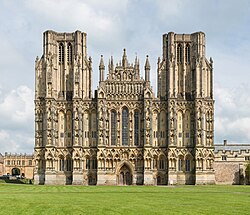
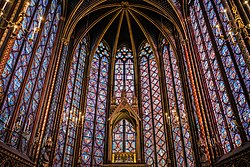













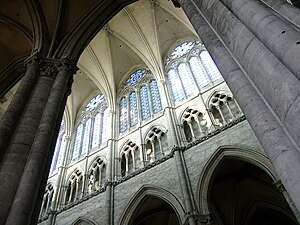

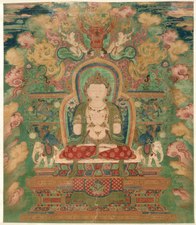
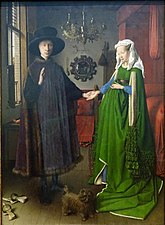

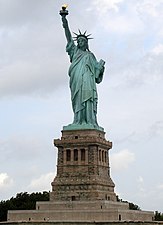

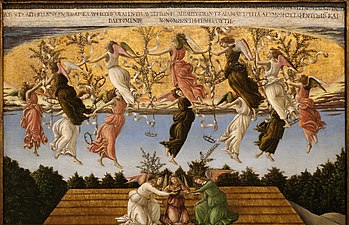

















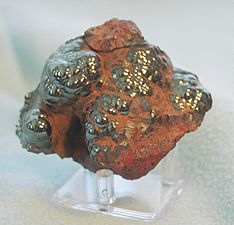



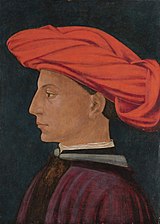
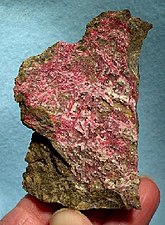









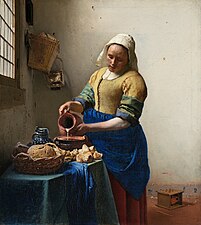




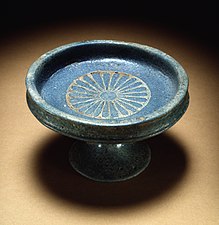

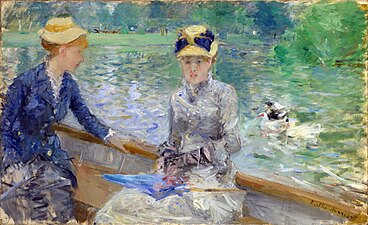



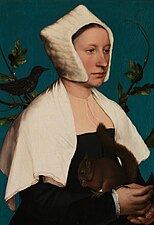
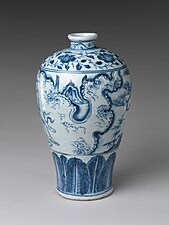






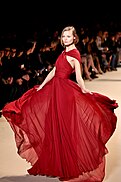






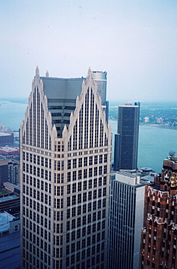
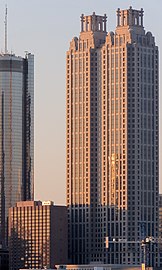


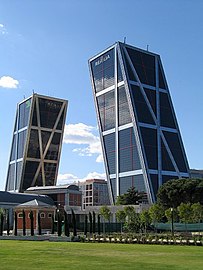








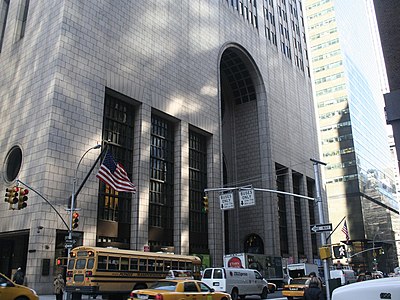
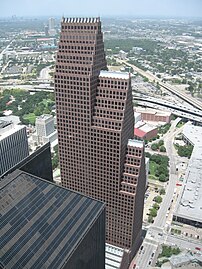
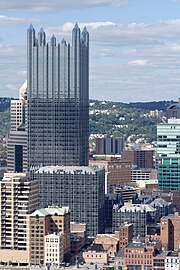






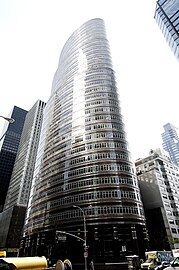
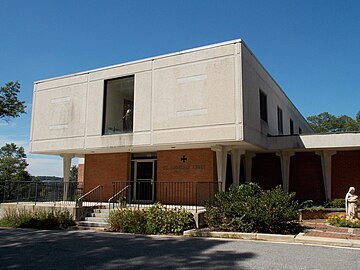
![Munson-Williams-Proctor Arts Institute in Utica, New York (1960)[52]](http://upload.wikimedia.org/wikipedia/commons/thumb/e/eb/Munson-Williams-Proctor_Arts_Institute%2C_Utica_NY.jpg/405px-Munson-Williams-Proctor_Arts_Institute%2C_Utica_NY.jpg)

